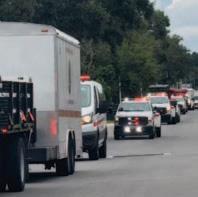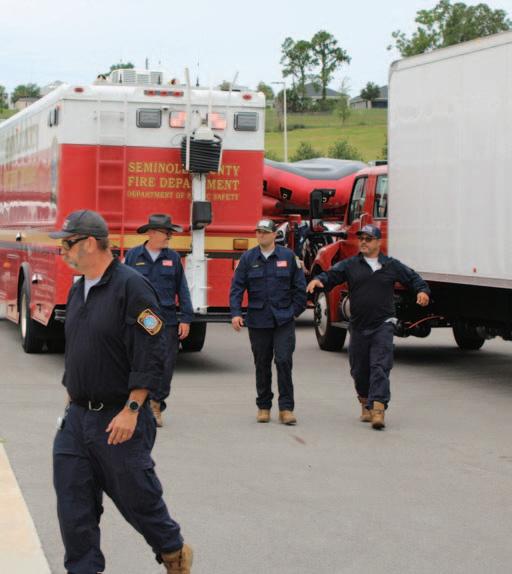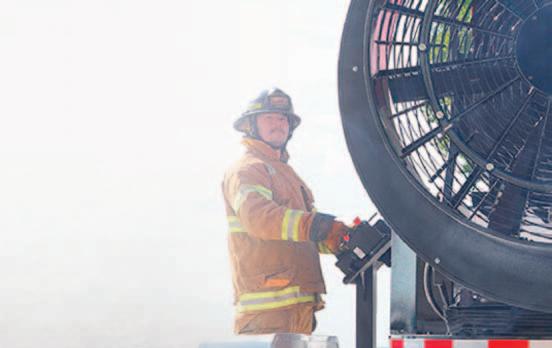
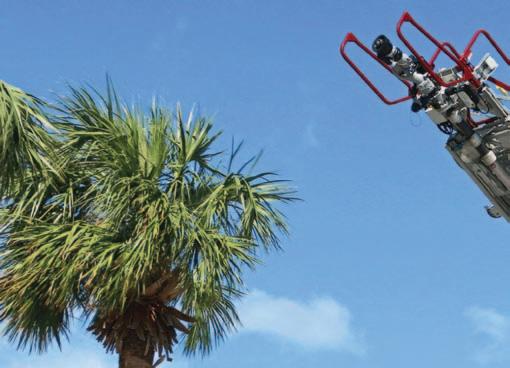
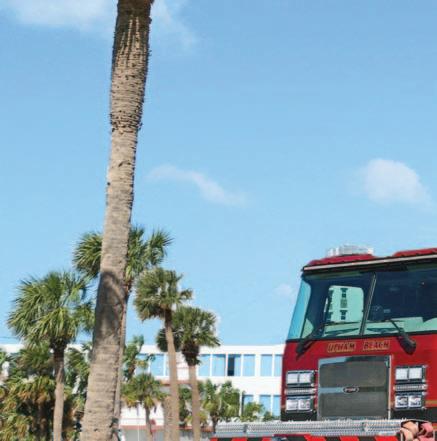

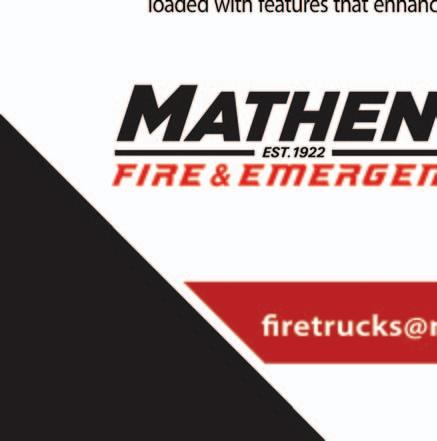
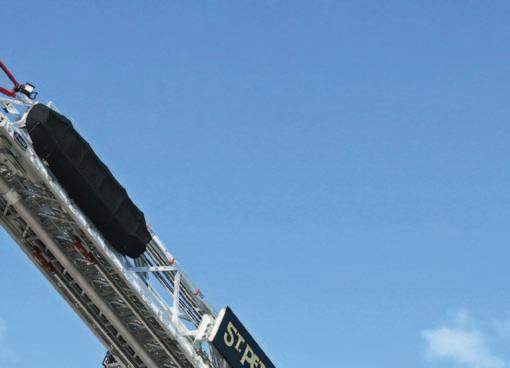
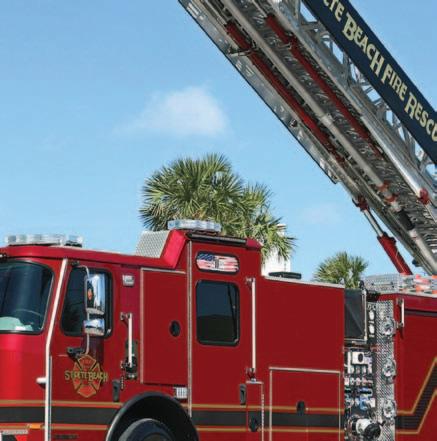











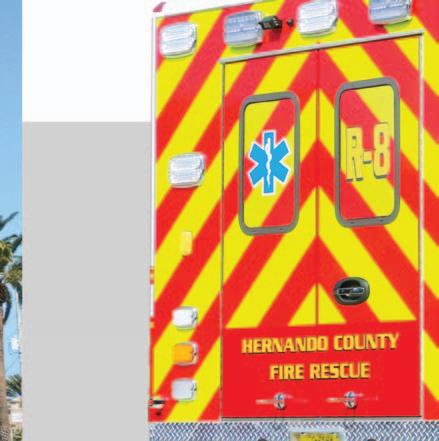
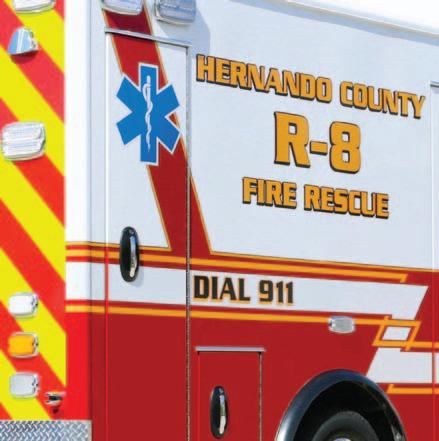



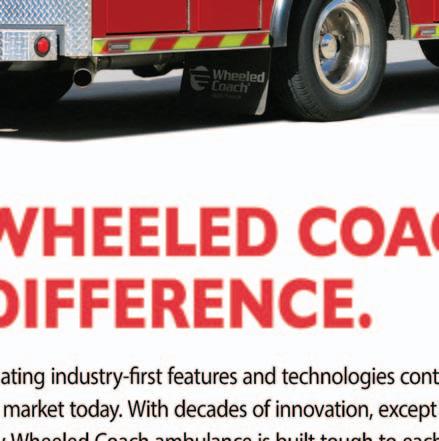
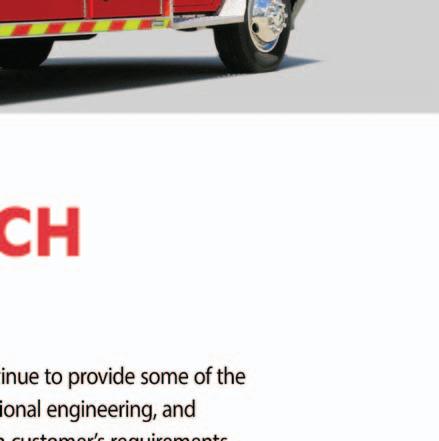


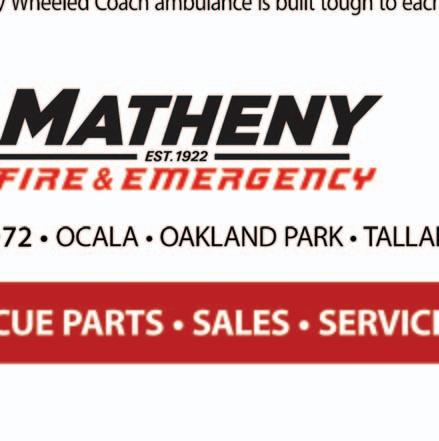
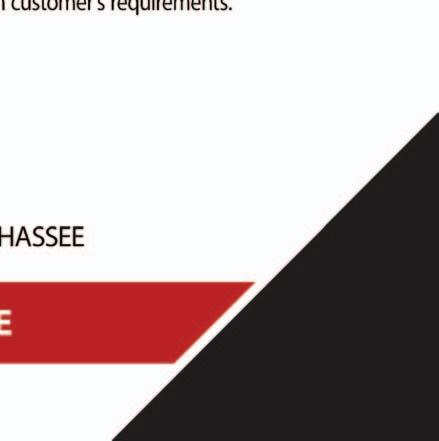

































Florida Fire Service is the monthly publication of the Florida Fire Chiefs’ Association, provided to Florida Fire Chiefs’ Association (FFCA) members, by the Florida Fire Chiefs’ Association.
Florida Fire Chiefs’ Association
221 Pinewood Drive
Tallahassee, FL 32303
Phone:(850) 900-5180
Email: info@ffca.org • www.ffca.org
FFCA Staff
Ngoc Huynh- Executive Director
Rachel Pardo - Marketing & Member Services Coordinator
FFCA Board of Directors
Trip Barrs - President
Ryan Crawford - 1st Vice President
Mike Tucker - 2nd Vice President
Michael Choate - Immediate Past President
Carlos Aviles - Secretary/Treasurer
Jeff Wagner - Northwest Region Director
Brady Rigdon - Northeast Region Director
Todd Allen - East Central Region Director
Chantal Botting - Southeast Region Director
Ian Kemp - West Central Region Director
Gregor y DeWitt - Southwest Region Director
Ngoc Huynh- Executive Director
Terr y Parris - Foundation Chair
Jeffrey Money - Senior Member
Editorial Submissions magazine@ffca.org (850) 900-5180
Advertising
Scott Leisen, Editor in Chief scott@ffca.org (386) 717-0055
Subscription rate for members is $36, which is included in member dues. Archived electronic monthly editions of Florida Fire Service magazine are available at www.ffca.org. Log in as a member and click on the Publications tab.
Florida Fire Service
August 2025, Volume 33, Number 8 USPS # 016-759
Periodical postage paid in Daytona Beach, Florida, and additional post offices.
POSTMASTER: Send address changes to Florida Fire Service, 221 Pinewood Drive Tallahassee, FL 32303. Statements of fact and opinion are the responsibility of the authors alone and do not imply an opinion on the part of the officers or the members of FFCA.

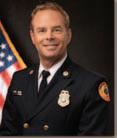

Copyright 2025 by the Florida Fire Chiefs’ Association. All rights reserved. Materials may not be reproduced without written permission. The Guardrails in
How Florida Firefighters are Helping Fight Cancer
Oviedo Fire Depar tment Promotes Two Distinguished Firefighters .14 Life On the Line: Paramedics Embedded into SWAT Team . . .18 Keystone Heights Honors 100 Years of Fire and Police Ser vice . . . . .20
Orange County Fire Rescue Hosts 2025 FRI Conference . . . . . . . .22
Seminole County Fire Department and the Altamonte Springs Police Depar tment Host the 3rd Annual Back to School Bash . . . . . . . .24
Smokey Bear Marks 81st Birthday at Gold Head State Park . .
.26
Cape Coral Partners with Family Initiative to Deliver Fire Safety to Students with Autism . . . . . . .28
Palm Coast Fire Depar tment Promotions . .

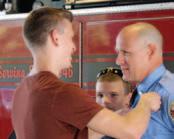
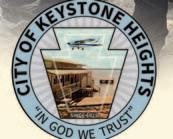
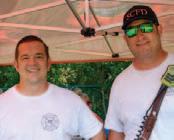
.30
Polk County Fire Rescue Crew Delivers Child in Highland City .31 Oviedo Fire Department Ropes Training 31 In brief . . . news from around the state . . . . . . . . . . . .32 Advertisers Index . . . . . . . . . . . .36
14 18 8 10 20 22 24 26 28 30 31 31 6 12 16

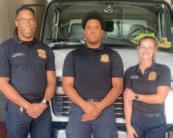
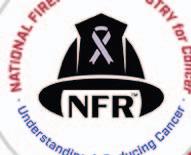



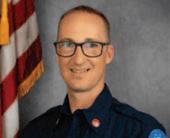
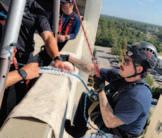
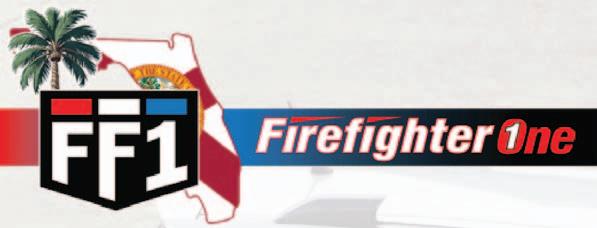















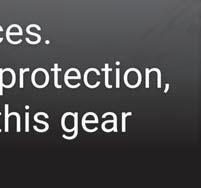










As I reflect on the past month, I’m struck by just how much the Florida Fire Chiefs’ Association continues to accomplish thanks to the dedication of our members, partners, and staff. It’s been a busy, productive, and occasionally challenging few weeks, but every effort has been aimed at advancing our mission: to support Florida’s fire service leaders and improve the safety and well-being of the communities we serve.
One of our major focuses this month has been on legislative and regulatory developments. While the legislative session is behind us, we are gearing up for the rulemaking process for several important firefighter health and safety measures. Our Legislative and Government Relations Committee has been actively engaged with state agencies to ensure that the intent of the new laws is carried out in a way that supports our members’ needs and protects our firefighters. I’ve personally participated in several stakeholder calls to advocate for practical, science-based approaches, especially regarding implementation timelines and funding mechanisms.
We also convened a special workgroup to address the rollout of Florida House Bill 929, which requires agencies to notify firefighters about potential contaminants in their issued bunker gear. This law has generated questions from members, so our workgroup is preparing model communication templates and guidance documents. We’ll distribute those to fire chiefs across the state once rulemaking is complete. I’m proud of how quickly our members stepped up to share best practices and resources to make compliance smoother for everyone.
In addition, we’ve been actively communicating important changes to fire prevention code administration that occurred when House Bill 551 was signed into law. This legislation significantly impacts the process for adopting and enforcing local amendments to the Florida Fire Prevention Code. Departments must now ensure that all current local amendments are transmitted to both the
Florida Building Commission and the State Fire Marshal’s Office. Many have not yet done so, and we’re working to help our members avoid being caught off guard. HB 551 also introduced provisions affecting fast-track permitting for certain fire alarm and sprinkler systems, requiring closer coordination with building officials. We’ve been working with the Florida Fire Marshals’ Association and the Florida Building Officials Association, but I encourage every chief to connect locally to ensure compliance.
We also responded to the Florida League of Cities’ request to participate in their Property Tax Reform Workgroup. This group will evaluate potential changes to municipal property tax structures that could significantly impact fire department funding. I’ve appointed Chief Darrel Donatto to lead our participation, with Chiefs Carlos Aviles, Frank Babinec (ret), and Bill Sturgeon serving as our representatives. Their collective experience—spanning legislative affairs, municipal management, and operational leadership—positions us well to contribute meaningfully to these discussions.
On the Federal front, the FFCA sent an urgent letter to Florida’s congressional delegation regarding the elimination of Urban Area Security Initiative (UASI) funding for our state. This funding has been critical in supporting preparedness in high-risk urban areas like Miami, Tampa, Orlando, and Jacksonville. The loss of UASI funding jeopardizes joint training, specialized response teams, interoperable communications, and regional intelligence sharing. We called on our lawmakers to champion restoration of these funds in the upcoming appropriations process, emphasizing that this is not just a budget issue but a matter of public safety and national security
Our advocacy also extended to supporting the “Thin Blue Line Act” at the Federal level. On July 18, I sent a letter to Congressman Vern Buchanan expressing our strong support for this legislation, which would make the murder or attempted murder of a police officer or
Trip Barrs, Fire Chief FFCA President

firefighter an aggravating factor in death penalty determinations. This bill sends a clear message that our nation stands firmly behind its protectors.
On the operational side, we finalized plans for the upcoming Health and Safety Conference. Registration numbers are strong, and we’ve lined up a diverse program of training and vendor engagement opportunities. In collaboration with the University of Central Florida’s RESTORES program, we are working on a pilot peer-support network for fire chiefs and command staff. Leadership can be an isolating role, and our goal is to ensure those making critical decisions for their departments have access to confidential, informed support when they need it most.
Over the past month, we’ve also checked off several important strategic plan milestones. We are working with our membership and marketing coordinator to update our communications plan to better connect members with timely advocacy alerts and training opportunities. We have also hired an exhibits & sponsorship sales professional and expanded our membership outreach to rural and volunteer departments. Each of these achievements moves us closer to our vision of supporting the leadership of a stronger, more unified fire service in Florida.
Your engagement, whether through a phone call, an email, or participation in a committee is what keeps our association strong.
Stay safe, stay connected, and thank you for all you do.








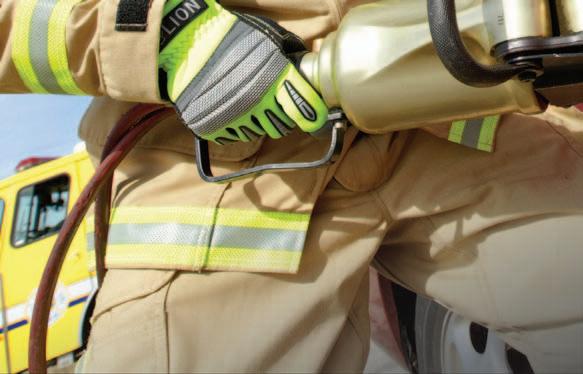
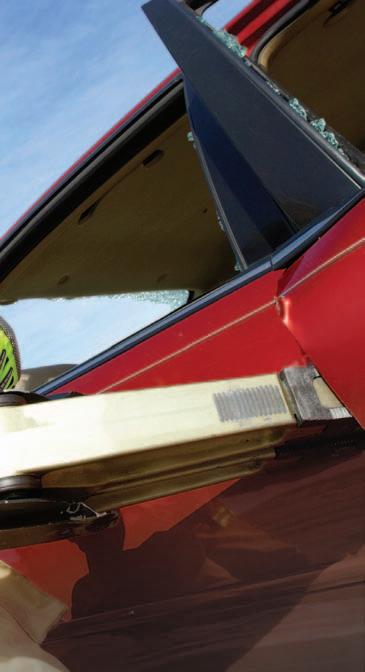


By Rick Spence
Several years ago, our son was in the US Navy and was stationed in San Diego. During our time visiting him, we decided to drive to the Laguna Mountains for the day. The highest mountain in that range is Mount Laguna which is around 6000 feet in elevation. That may not mean much to people who live in Colorado, but for someone who has lived in Florida for their entire life, it is very impressive. While we were driving up the narrow 2 lane roads to the top of the mountain, there was a small gravel breakdown lane that ended at a metal guardrail. There were some small ridges in the pavement before you get to the breakdown lane. They were designed to serve as a warning that you are getting close to the end of the road and were going to hit the guardrail. The metal guardrail was reinforced with concrete and steel to help cars from plummeting several thousand feet down the mountain.
All of us are like the mountain road in the way that we also have guardrails in our lives. Our guardrails are often in the forms of our conscience, other people (friends, mentors, parents), our previous experiences and The Bible. Many Christians, including myself, refer to their conscience as the Holy Spirit speaking to us. They ser ve as guardrails to keep us from plummeting into the depths of our lives by helping us in making wise decisions. They are designed to keep us safe and to keep
you from going further once you hit them. The guardrails come into play when you are in a relationship that you know is not good for you. Often, before you speak you will feel a slight sensation in your belly to rethink what you are about to say. That is a guardrail trying to keep you in the safe lane. There is also a feeling you get when you know you are getting ready to do something that may not be illegal, but it is likely unethical or immoral.
These are personal guardrails that warn you that you are about to blow up your career, relationship, finances or other aspects of your life. I can tell you from personal experiences that there are many times I have regretted not following the gentle nudge I got prior to crashing through a guardrail. Too many times, my mouth would override my brain, and I thought people would like to hear my opinion, regardless of whether it was helpful or wanted. When our children were smaller, we would often tell them, ‘Just because a thought pops into your head, it doesn’t mean it has to come out of your mouth.’ It is now apparent to me where my kids inherited that trait from. I have damaged relationships with friends that I wish I had kept close. I have been passed over for positions that I was qualified for and was well suited for because of some previous misconduct. I have lost or misspent thousands of dollars by not following the tension I was feeling in the pit of my stomach. One of the biggest regrets in my life is that I did not stay within the guardrails that were in front of me. I did things and made choices that I knew were not the best for me or those around me. But I would run
into the guardrails and continue to push past it, plummeting down the mountain. Most of the wounds I have endured over the years were self-inflicted.
The Bible is the best guardrail we can have. There is so much wisdom we can apply to every aspect of our lives. There is advice on maintaining healthy relationships, how to handle your money properly, making life decisions, raising your children, job opportunities, caring for others, forgiveness and so much more insight into living life. If I was able to go back in time, I would redo so many things in my past and I’m sure I could have avoided some of the most difficult times in my life. Solomon wrote the Old Testament book Proverbs which give wisdom and insight into almost every aspect of life. Solomon wrote, “My child, hold on to your wisdom and insight. Never let them get away from you. They will provide you with life—a pleasant and a happy life.” Proverbs 3:21,22 (Good News translation). If only I had followed this instruction more often.
Rick Spence retired as Assistant Chief from the Reedy Creek Fire Department after 30 years. He is currently the Chaplain for the Florida Fire Chiefs’ Association, Central Florida Fire Chiefs’ Association, Reedy Creek Fire Department, Lake County Fire Department, Clermont Fire Department, Maitland Fire Department, and the Florida Professional Firefighters. He serves as Sergeant of Arms for the Florida Professional Firefighters and International Association of Firefighters.He was selected Florida Professional Firefighter of the Year in 2018.He has been married to his wife Alecia for over 30 years



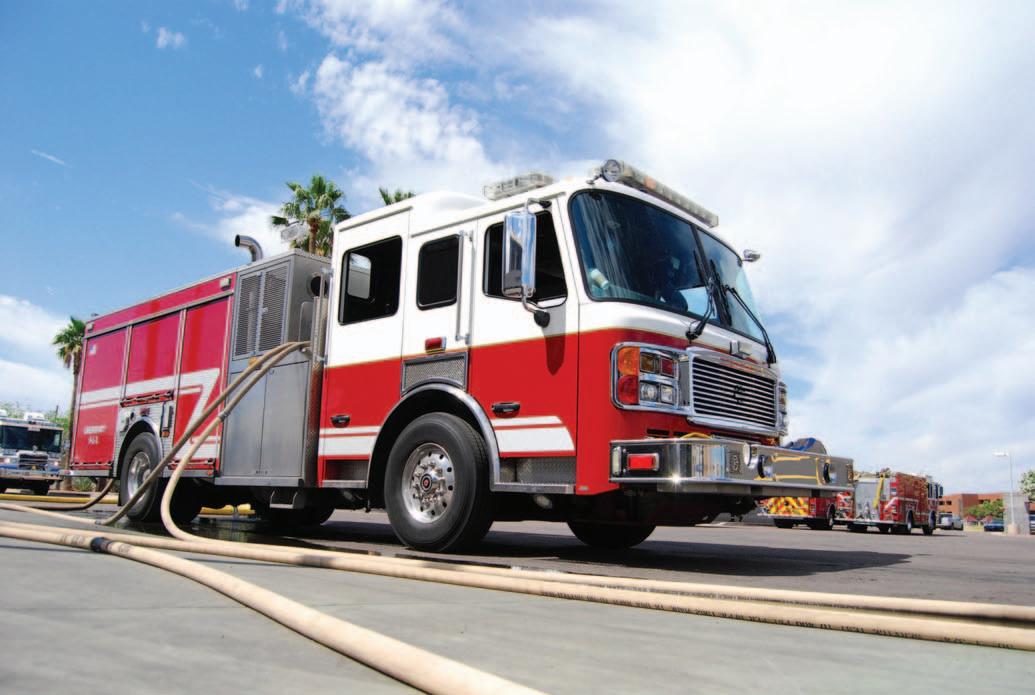
Allows employment with multiple Florida fire service organizations to meet five year, full-time firefighter continuous service requirement Simple Enrollment - No Roster Required Direct Claims Administration
By Dr. Lindsay Judah, Rick Markley, Dr. Kenny Fent
Joining the NIOSH National Firefighter Registry for Cancer is one of the easiest and most impactful things every firefighter can do in this fight.
Cancer does not discriminate. It can impact any firefighter anywhere, whether you’re just starting your career, have hung up your helmet, or serve your community as a volunteer.
According to the Florida Department of Health cancer has been the second leading cause of death in Florida, after heart disease for the past decade. Additionally, on average, 115,000 new cancers diagnoses are reported to the Florida Cancer Data System.
Cancer has been a top issue in the fire service for quite some time. Nearly every experienced firefighter knows a brother or sister in the fire service who has had cancer, has undergone significant treatment for cancer, or has succumbed to this pervasive disease. We desperately need more research to better understand cancer in the fire service, so we can reduce the risk of cancer
The National Firefighter Registry (NFR) for Cancer aims to achieve these goals. The NFR, which is managed by the National Institute for Occupational Safety and Health (NIOSH), is a voluntary registry to study the relationship between firefighting and cancer. It is the only nationwide effort to evaluate firefighters’ risk of cancer over an extended time —20 years or more.
It’s important that both firefighters with and without cancer join the NIOSH NFR. Response from both groups allows NIOSH scientists to compare those who develop cancer over time to those who do not. This will help researchers better understand factors that contribute to cancer development in firefighters. These factors may include exposures from cumulative fire responses, unique exposures from major events or disasters, and sleep disruption. The NFR can also evaluate the impact of protective practices, like routine laundering of turnout gear, use of skin cleansing wipes, and even annual physicals.
It’s also important to have many different types of firefighters join the NIOSH NFR. This includes men, women, those who have left the profession (retired or resigned), volunteer, airport-rescue, military, industrial, and wildland firefighters, as well as inspectors, investigators,
and instructors. NIOSH’s goal is to have 200,000 firefighters enroll in the NFR. This is only about 10% of the eligible population (there are about 1 million active firefighters and a similar number of former/retired firefighters in the United States).
The registry launched in the spring of 2023. Since that time, more than 26,000 have joined. So, how does Florida’s participation stack up with other states? To keep tabs on that data, NIOSH created a dashboard that anyone can access.
With 892 registrants, Florida ranks in the top 75% of the states. However, it hasn’t yet cracked the top 10 states in either number of registrants or number of registrants as a percentage of population. So, there’s work to do in the Sunshine State.
According to U.S. Fire Administration data, Florida has nearly 400 fire departments. The state’s fire marshal reports that about 200 of those departments use volunteers. According to the Florida Governor’s office, there are more than 50,000 firefighters in the state.
What all those numbers mean is that there is a lot of room for increased NFR enrollment in Florida. Less than one in 50 active firefighters in the state have added their information to the NFR. The ratio is even smaller when you factor in retired firefighters.
“We can do a lot of meaningful research with 26,000 firefighters,” says Dr. Kenny Fent. Fent is a research industrial hygienist with NIOSH, a commander in the U.S. Public Health Service, and the lead researcher on NFR. “But to get closer to fully understanding the relationships between firefighting and cancer, we need a large body of participants from all the segments of the firefighting community. That’s where the 200,000 firefighter goal comes from. That’s where we can get impactful data that can lead to recommendations for how to reduce cancer in the fire service.”
The good news is that although enrollment can be a bit time consuming, it is fairly easy for most.
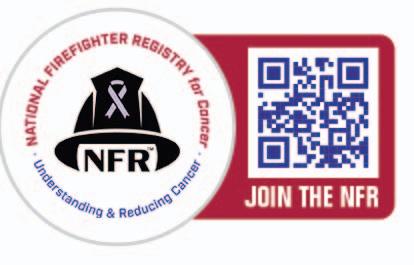
Enrollment is straight-forward. Steps 1-3 below can be completed in as little as 5-10 minutes. The time involved to complete the questionnaire depends largely on the career of the individual. However, the system is designed to allow firefighters to leave and return as time permits to complete this section.
1. Create your account: Visit NFR.cdc.gov, confirm your eligibility, and click “Login.gov”
2. Read and electronically sign the consent form
3. Fill out the user profile
4. Complete the questionnaire (demographics, work history, health history, and lifestyle)
After completing the user profile, you will receive an NFR participant number – keep this number for your records. If you encounter any issues, there is an option to call or email a help desk for support.
One concern firefighters often voice when learning about the NFR is data privacy Understandably, no one wants their personal data shared without their permission or used against them. Congress and NIOSH anticipated those concerns when NFR was still in the building stages. They made privacy and data security top priorities for the NFR. Here’s how Firefighters register for the NIOSH NFR through a secure website using multi-factor authentication. Firefighters create an account through Login.gov, which is a single sign-on solution for U.S. government websites. When completing the registration process, firefighters are automatically logged-off if there is no online activity for 5 minutes. When they submit the questionnaire, their information is recorded to the secure encrypted database.
Only authorized NIOSH researchers will have access to identifiable information collected as part of the NFR. Data collected through the NFR are protected by an Assurance of Confidentiality, which is the highest level of protection available for public health data. This Congressionally mandated level of protection means that no identifiable information may be disclosed without the consent of the individual and is even protected from subpoena.
In short, NFR is a safe and simple way each firefighter can do their part to help researchers find ways to reduce our cancer risks. Current and retired firefighters in Florida have already taken great steps, but more work is needed. Join the fight against firefighter cancer by joining the NIOSH NFR today.
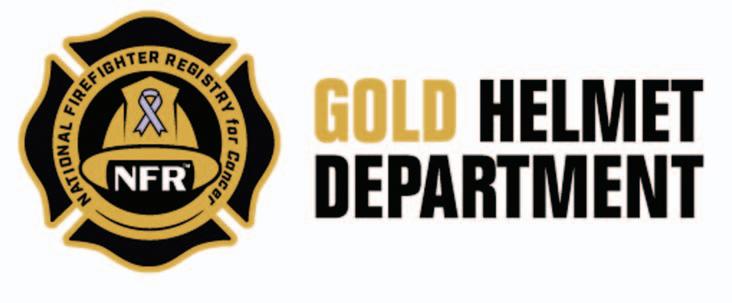
Your department can make a difference! Challenge your department to enroll at least half of its active firefighters in the NIOSH NFR and help reduce cancer in the fire service. Fire departments who have at least 50% of their active firefighters or more than 300 active firefighters signed up for the NFR are recognized as a Gold Helmet Department.
If you believe your department has met the eligibility criteria, please email NFRegistry@cdc.gov and provide the total number of active firefighters in your
department. Participants will need to select/enter their current department in the user profile to be counted towards this distinction.
NIOSH will then review the NFR database. If your department meets the criteria, NIOSH will send you a confirmation email. This email shares details about the Gold Helmet Department recognition and includes a certificate, website badge, and social media posts to share.
Florida currently has one Gold Helmet Department: Baker County Fire Rescue. Which department will be recognized next?
Lindsay Judah is a contractor for NIOSH and serves as a fire and emergency services consultant. She has a Doctor of Public Administration from Valdosta State University. She is a graduate professor and Rescue Chief for a metro fire rescue agency. Dr. Judah is an advocate for the NFR for Cancer, NFFF Everyone Goes Home, peer reviewer for CPSE, and a Firefighter Mayday Survey and IFSTA validation committee member.
Rick Markley is working with NIOSH to enroll firefighters in NFR. He has been an editor and writer in the fire service and a volunteer firefighter for more than 15 years. He serves on the boards of directors for Science to the Station and Firefighter Behavioral Health Alliance. He is a volunteer with Firefighter Close Calls and is executive editor of CRACKYL Magazine.
Kenny Fent is a research industrial hygienist and head of the NFR for Cancer at NIOSH. He has spent over a decade studying firefighters’ exposures and health effects. Dr. Fent has published over 80 articles and reports summarizing his findings, and serves on several fire service, public safety, and scientific advisory committees. He is also a Captain in the U.S. Public Health Service, where he has responded to domestic and international emergencies.


By Michael Tucker, Fire Rescue Chief, Flagler County Fire Rescue
“Compassion is not a relationship between the healer and the wounded. It’s a relationship between equals. Only when we know our own darkness well can we be present with the darkness of others. Compassion becomes real when we recognize our shared humanity.” Pema Chodron
Being in the field of emergency services, it’s generally understood that you are expected to show compassion to the patients and family members to which you are called to serve. When you respond to their emergency, it is expected that you will serve them to the very best of your abilities. In situations where the emergency is “critical”, having compassion for them is relatively easy. It’s easy to connect with a family member who has lost a loved one. It’s easy to feel compassionate for a family who has lost their home to fire. In times like these it doesn’t take a lot to find the heart within yourself to feel their pain.
However, it’s in the small, mundane calls where it can be challenging to find that connection which stimulates compassion for them. Those times where someone calls 911 for the “umpteenth time” and everyone onscene is frustrated with being there again can take the edge off your ability to feel for them. It can be those frustrating times when you interact with care center staff that takes the edge off our ability to feel compassion for the patient as well.
What isn’t always a clear expectation is the extension of compassion to those inside of the station. Just like responding to victims of critical patients, it’s easy to show compassion to co-workers who are experiencing life’s “big” challenges. It’s not so easy to remember to show compassion to each other in the more mundane activity of simply doing life together. Everyone is walking through some form of life challenge or another.
The intentional act of demonstrating compassion to those around you can certainly have a positive impact upon their ability to navigate whatever challenge they are going through. Demonstrating compassion to one another serves to create an environment in which people feel safe and can reach their maximum potential. Without that feeling of safety, people always revert to a position of safety and avoid any level of risk that may hurt them further.
As a leader, it is your responsibility to create an environment in which the demonstration of compassion is an expected behavior. You must be the one to set the example of what compassion looks like and how it is lived out. It’s also your responsibility to remove individuals who cannot, or will not, demonstrate compassion in the workplace. Allowing these people to stay inside of your organization is comparable to allowing cancer to exist inside of your body after diagnosis.
At the positive end of the spectrum, you should absolutely celebrate the members of your team who demonstrate compassion. Shining a spotlight on positive behavior helps to show everyone on the team what expected behavior looks like. The more you celebrate the behavior, the more others will want to step up and do the same.
Being an organization known for it’s compassion has many benefits. Some of the more obvious ones include:
•Improved employee morale (mental wellness and retention).
•Reduced anxiety (mental wellness and retention).
•Reduced feelings of loneliness (mental wellness and retention).
•Increased feelings of connectedness (mental wellness and retention).
Being a leader known for demonstrating compassion also has many benefits. These include:
•Sets you apart as a leader.
•People trust you more.
• Amplifies your influence.
Followers will give you grace when mistakes are made.
The question comes in how you display compassion in the workplace. Demonstrating compassion isn’t a matter of being soft and cuddly. It is possible to be a compassionate leader and still hold people to high standards. However, it does require intentionality in the following areas:
Be compassionate to yourself: If you can’t be compassionate to yourself then you will never be in a good place to be compassionate to others.
Communication: You must listen to what others are saying and not saying. You must listen for what’s missing when they speak.
Connections: A respectful hand on the shoulder when encouraging someone can make a difference.
Encourage: Words matter! Positive words matter a lot. Taking the time to speak into someone’s life can be the spark someone needs to take the next step.
Initiate: Be the first to show compassion. Set the example for those around you.
Thoughtfulness (emotional intelligence): Be aware of the emotions of others and understand the emotional wake that you leave moving through the organization.
It doesn’t matter whether it’s an organization or an individual, the benefits of building compassion into your modus operandi far outweigh any perceived risk. Sure, taking the time and making the effort to be compassionate is hard, but nobody ever said being a leader is easy. Besides, it’s the right thing to do!
“The purpose of life is not to be happy. It is to be useful, to be honorable, to be compassionate, to have it make some difference that you have lived and lived well.” Ralph Waldo Emerson


By Lisa McDonald, Communications Manager City of Oviedo
In a proud moment for the Oviedo Fire Department and the local community, two dedicated firefighters were officially promoted during a pinning ceremony held on Friday, July 25, 2025, at Fire Station 46.
Fire Chief Michael Woodward led the ceremony, promoting Michael Radzak to the rank of Lieutenant and Tim Deppen to Engineer, recognizing both for their commitment, leadership, and years of exemplar y ser vice.
“These promotions reflect more than just years on the job,” said Chief Woodward. “They represent the dedication, hard work, and integrity that both of these individuals bring to the Department every day. I am so proud of both of them.”

Lt. Michael Radzak has been with the Oviedo Fire Department for 11 years, during which he has steadily built a strong reputation as a reliable and capable team member. He holds multiple advanced certifications including Fire Officer I and II, and Live Fire Instructor, and earned an associate’s degree in emergency medical services. His promotion to Lieutenant is a testament to his continued professional growth and leadership within the department.
With more than two decades in the fire
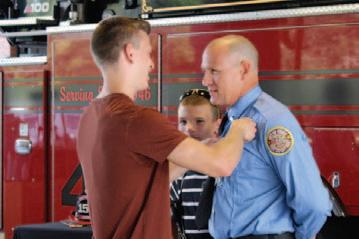
ser vice, Engineer Tim Deppen brings a wealth of experience to his new role. He has ser ved with the Oviedo Fire Department since 2004 and was named Firefighter of the Year in 2007 for his extraordinary response to a tragic plane crash in Sanford. His contributions extend beyond emergency response—he also played a key role in developing the City’s pre-fire plan program, an initiative designed to improve preparedness and safety.
The pinning ceremony was attended by fellow firefighters, command staff, and proud
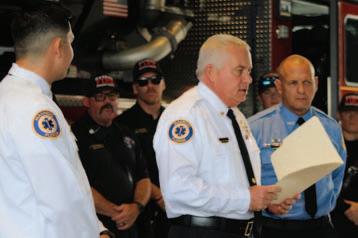
family members, all gathered to celebrate the milestone achievements of Radzak and Deppen. The atmosphere was filled with respect, gratitude, and admiration for two men whose careers reflect the best of public ser vice.
As the City of Oviedo continues to grow, it’s firefighters like Radzak and Deppen who ensure that public safety remains a top priority. Their promotions not only mark individual success but also strengthen the leadership and capability of the department as a whole.



By Lexipol Team
Policy may not be the most exciting topic in the firehouse. In fact, retired Battalion Chief Bruce Bjorge jokes that when you bring up policy and procedure in a mealtime conversation, you’re likely to be met with an eye roll. But in his webinar, “How’s Your Playbook? What Sports Can Teach Us About Excellence in Public Safety,” Bjorge makes a convincing case: Policy isn’t bureaucracy — it’s your playbook.
And in public safety, just like in sports, the playbook matters.
Imagine a football team (or any kind of team) without a defined playbook. No set formations, no expectations on execution, no clarity on roles — just players reacting in real time, hoping their instincts align. They might have raw talent, but without a shared strategy and understanding, success is unlikely.
The same holds true in the fire ser vice. When your crew rolls out the door, every member should know the overall game plan, their individual assignment, and how to execute it under pressure. That only happens when policy is more than just a dusty binder on a shelf. It requires the full integration of policy and policy training into the core of your agency’s daily operations.
“It is foundational to a fire ser vice organization’s success or failure,” Bjorge says. “You can have the best people, the best training, the best apparatus, but if you don’t have a clear playbook, none of it matters.”
Policy discussions can seem boring, Bjorge acknowledges, but they’re critical for safety, efficiency and trust. “We need to make sure not only that you have a solid playbook, but that everybody knows what the playbook is and what their role is,” he explains.
Without clarity, even the best teams will struggle under pressure. Bjorge draws comparisons to professional sports: “Who goes to the Super Bowl? Teams that not only have good plays, but know how to execute on them.”
And let’s face it — execution is everything. Bjorge emphasizes that training must be directly tied to the organization’s policies. It’s not enough to drill skills in isolation. Teams need to practice the actual plays outlined in department procedures.
“In the fire service, it’s not just a matter of do you train or not,” he says. “But what are you training on? Is it of high quality? And is your training based on your policies and procedures?”
Just as sports teams drill against real plays, fire crews must align training with expectations and roles. That alignment is where excellence begins. So, when things get real and everyone needs to be on the same page, there will be no confusion about what to do. And what to do next.
One of the most dangerous trends in public safety, Bjorge warns, is the normalization of deviance — when seemingly minor rulebreaking behaviors become accepted norms over time. “If we don’t hold each other accountable, we start cutting corners until it becomes the culture,” he says.
This is especially true in high-risk, lowfrequency situations. Practicing policycompliant responses to these events is what Bjorge calls “insulating risk.” Without appropriate training on the policy, members of your crew won’t have the knowledge and muscle memory to act in the best possible way.
vs. Procedure: Know the Difference or Pay the Price
It’s common for agencies to confuse policy and procedure, which can lead to enforcement issues and unnecessary liability. Bjorge clarifies: “Policy is a statement of position. It uses language like ‘shall’ and ‘always.’ It’s mandatory and enforceable.”
Procedures or standard operating guidelines (SOGs), by contrast, should offer tactical flexibility. These documents explain how to carry out the expectations outlined in policy but allow for situational adjustments. Bjorge emphasizes the importance of writing them with an eye toward operational nuance: “There is a big difference between what we must always do, and what we generally try to do based on conditions.”
As an example, he shares a story about a vehicle teetering on a guardrail, liable to tip over at any minute. The agency had an outdated SOG requiring stabilization of every vehicle with step chocks — regardless of the situation on the ground (or in this case, off the ground). “That kind of language sets us up for failure,” he says. In situations where traditional tools aren’t practical or safe, overly rigid procedures can put firefighters at greater risk, which would have been the case if responders had attempted to stabilize the tippy vehicle with step chocks. Departments need to allow room for discretion, Bjorge says, while maintaining alignment with policy.
“We need to build flexibility into our procedures without compromising safety,” Bjorge adds. Recognizing the difference between guiding documents and enforceable policy can help organizations train more effectively, discipline more fairly and ultimately operate more safely.
A playbook is useless if no one can find it. Bjorge urges leaders to move past binders and make sure their teams have 24/7 access to current policies.
“We need to show our people how they can get that information, where they can look it up quickly, and refer to it when they have time to think,” he says. Better yet, integrate policies directly into your agency’s training. Reviewing the appropriate SOG before a window bailout drill, for example, makes policy tangible. Some departments use apps, digital drives or other mobile solutions. Whatever the method, Bjorge stresses: “Everybody needs to be playing from the same playbook.”

Plausible deniability — “Geez, Chief, I didn’t know” — remains a major challenge. But Bjorge reminds leaders that it’s not just about enforcement. It’s also about communication.
“We flood our people with information,” he says. “But we don’t always highlight what’s important.”
To fix that, he recommends using technology or tracking tools to confirm receipt and acknowledgment of new policies. “It’s not our job to force someone to read it,” Bjorge says. “It is our job to make sure they have access and acknowledge they’ve seen it.”
Bjorge shares a blunt reminder: “If we don’t enforce the policy, then it’s not worth the paper it’s written on.” Assuming, of course, that your agency’s policies are still printed on dead trees.
One of the most common policy violations in the fire service, Bjorge notes, is seatbelt noncompliance (despite mandatory-use policies). For some reason, public safety personnel are often remarkably blasé about their own personal safety “You see belts buckled behind backs, and no one gets called on it,” he says. “That erodes the legitimacy of the policy.”
Equally important is applying rules equally across ranks. Whether it’s social media conduct or safety on scene, enforcement must be consistent and fair to maintain trust.
In closing, Bjorge returns to the central metaphor: Your policy is your paddle. If everyone isn’t rowing in the same direction, you’re not going to reach your destination.
“Everybody wants to be on a successful team,” he says. “If we get in the boat and know the mission, know our role, and know which side to row from, then we get where we’re going together.”
Policy isn’t just about compliance — it’s about cohesion. And cohesion is what separates struggling departments from those that thrive.
Excellence in public safety doesn’t happen by accident. Like a championship team, success in the fire service requires clarity, consistency and commitment. That starts with your playbook, including policies and SOGs.
Bjorge challenges leaders to lead by example. Update your policies, integrate them into training, communicate changes clearly and enforce expectations fairly.
“This job really doesn’t suck unless we allow it to,” he says. “Check your attitude, know your role, and do your part to set your organization up for success.”
In other words: Know the plays. Drill on them. That way, when the time comes, the group works together like a championship team.
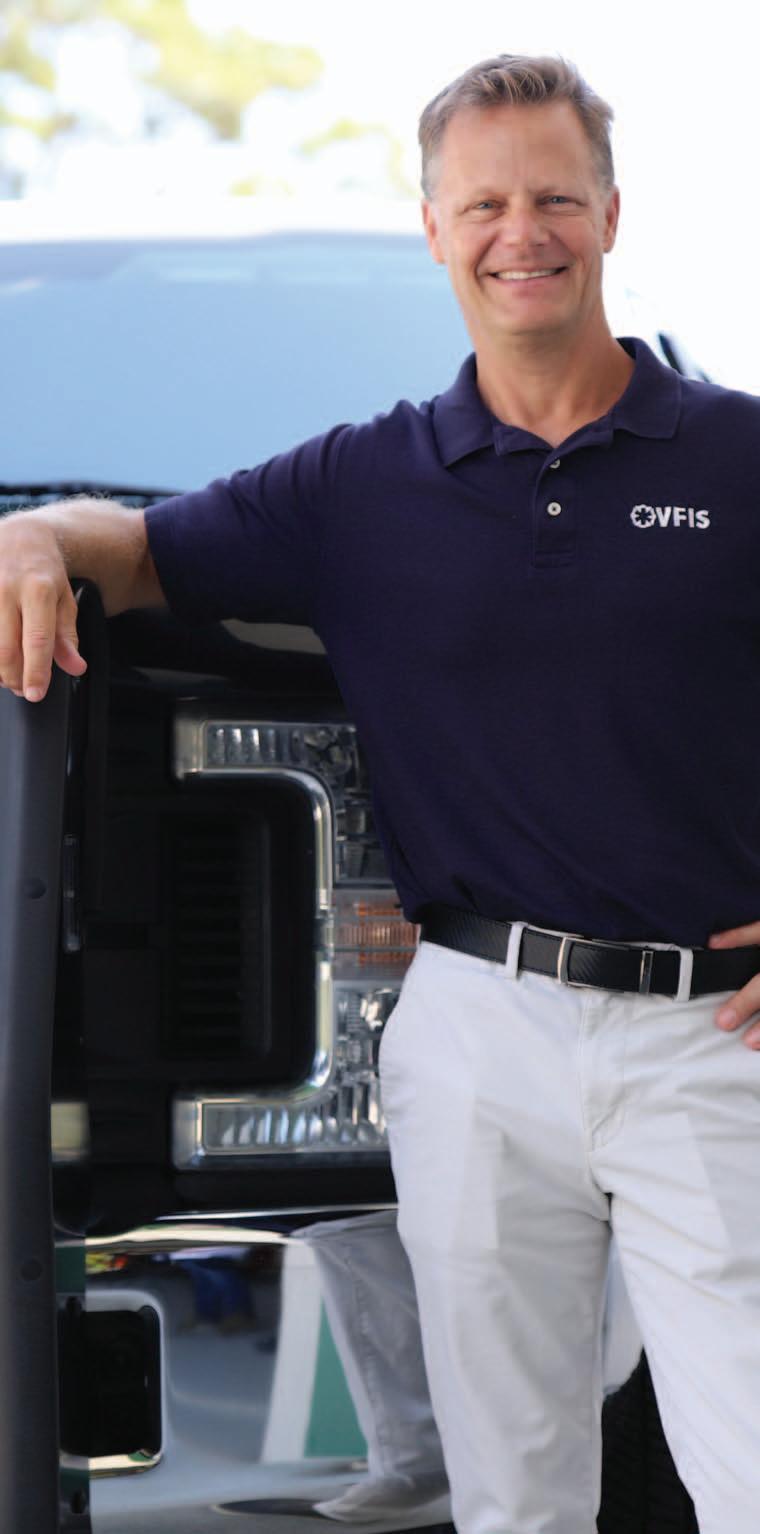
By Corey Dobridnia, Public Information Officer,Walton County Sheriff’s Office
In the high-stakes world of tactical law enforcement, every second matters, especially when lives are on the line. For years, SWAT teams across the country have operated at the highest level of precision and intensity, responding to the most volatile, high-risk situations imaginable: armed barricaded suspects, hostage rescues, active shooters.
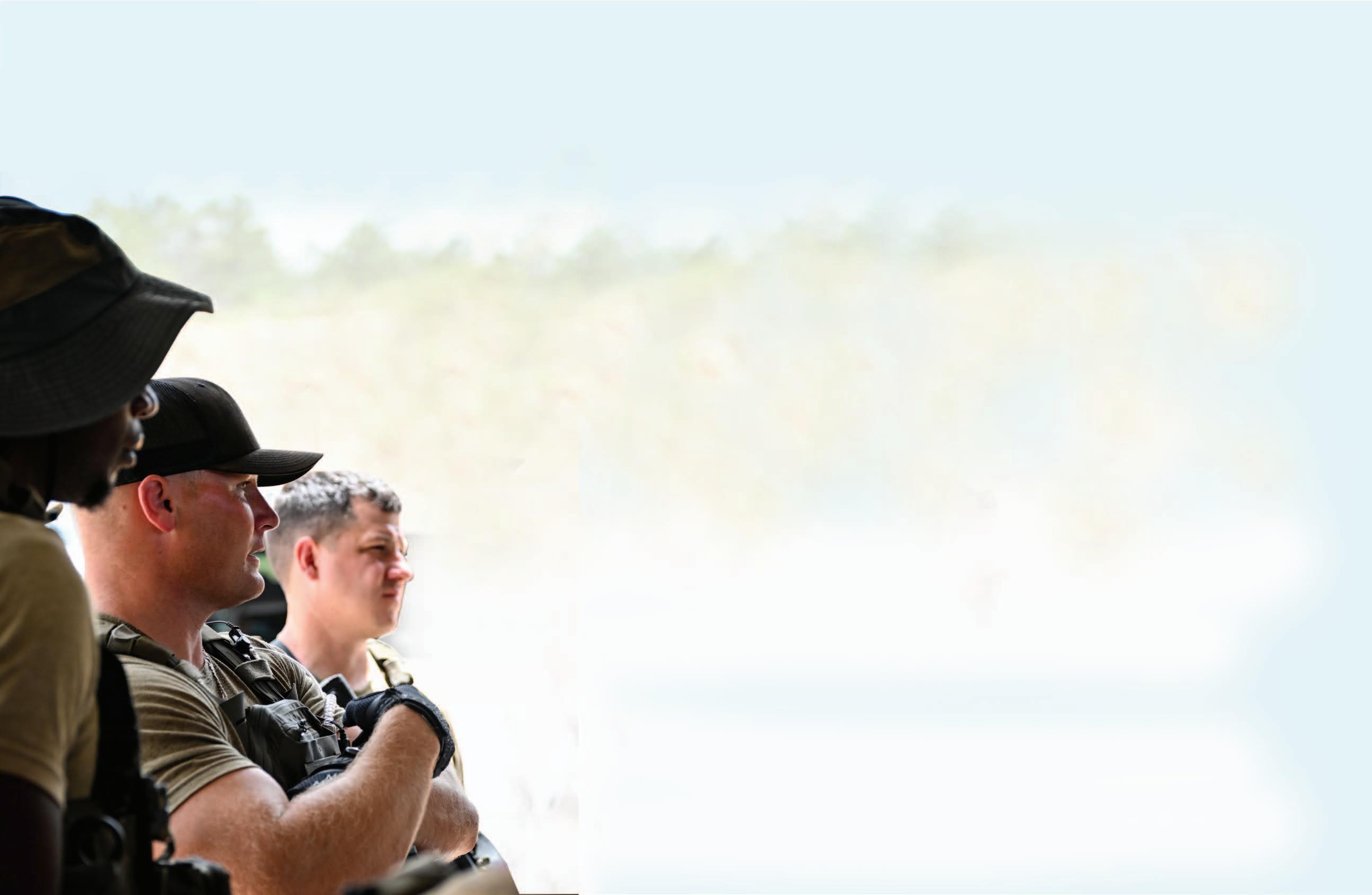
In these moments, time is a precious resource, and so is the human body. One wellplaced bullet, one deep wound, one wrong movement can shift the balance between life and death.
That’s where the Walton County Sheriff’s Office is changing the game.
In a bold and progressive move, Walton County Fire Rescue (WCFR) paramedics have been embedded directly into the Walton County Sheriff’s Office (WCSO) SWAT team. These specially trained medics are more than just spectators on standby. They gear up, go in, and stand shoulder-to-shoulder with SWAT operators during missions so they are ready to provide advanced life-saving care at a moment’s notice.
This joint initiative is not just about strategy, it’s about people. It’s about giving law enforcement officers, victims, and even suspects the best possible chance of survival. And it’s about evolving with
the needs of today’s public safety landscape.
“The primary purpose of the SWAT Medic is to enhance the mission of saving lives by providing immediate advanced life support for bystanders, hostages, deputies, and suspects,” said WCFR Division Chief of Logistics Travis Cook. “Attaching paramedics to the SWAT team eliminates the need for patients/victims to wait while a hostile situation is stabilized; instead, life-saving efforts can commence immediately providing timely and critical service to the community and its citizens.”
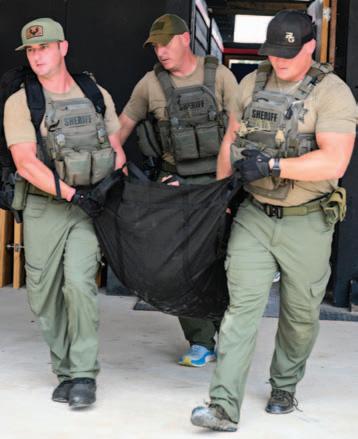
Chief Cook knows this work intimately. His journey into tactical medical support began years ago with the Holmes County Sheriff’s Office. Even after his career path led him to Walton County, that calling never went away.
“I have always thought of the SWAT team as a group of highly trained individuals who are called to the worst of the worst types of incidents. At some point, I asked myself, “Who is there for them when they need help?” Who do they call?” he said.
That question is what this program aims to answer. Now, they call WCFR.
The push to embed paramedics with SWAT teams isn’t entirely new. Tactical medicine programs have been growing nationwide, but for a growing multi-faceted public service agency like Walton County, the initiative speaks volumes about forward-thinking leadership and inter-agency cooperation.
In 2017 after the integration of

Walton County Fire Rescue into the Walton County Sheriff’s Office, Sheriff Michael Adkinson recognized the vital need to adapt and respond to the increasing risks involved in tactical operations. Together, the two agencies worked to break down traditional barriers between fire rescue and law enforcement, creating a shared mission, shared training, and ultimately, shared responsibility.
The need was clear. In a large and geographically diverse county like Walton, critical incidents often occur in areas where waiting for traditional EMS backup could cost precious time. Even if a scene is “cleared,” delays in patient access can still mean the difference between life and death.
By embedding WCFR medics directly into the SWAT team beginning in 2018, those gaps are closed. Medics are on the inside ready to move, treat, and evacuate under the protection of SWAT operators.
“Being a SWAT medic demands a different mindset,” said Walton County Fire Rescue Fire Marshal, Jeremy Radney, one of the first paramedics to join the team in 2018. “It’s not just about treating injuries. It’s about thinking like an operator, moving like one, and staying mission-focused under fire. You’re not just there to save lives, you’re part of the team that risks them.”
Being a paramedic is hard enough. Being a SWAT medic? That’s another level entirely
To prepare for the dual demands of tactical medicine and high-risk operations, WCFR paramedics undergo rigorous training alongside SWAT deputies. That includes tactical movement, weapons handling, scenario-based drills, casualty evacuation, and stress inoculation. The goal is not just to train medics to survive in a dangerous environment, it’s to train them to thrive in it.
“They have to be comfortable under fire, literally and figuratively,” said Lieutenant Thomas Thillet, WCSO SWAT Team Leader. “We don’t treat them like ‘just the medics.’ They train like us. They move like us. And when we roll out the door, they’re every bit as part of the team. And everyone on the team feels safer having them here.”
But unlike their law enforcement counterparts, these medics carry more than firepower. They carry chest decompression kits, hemostatic gauze, IV fluids, advanced airway equipment, and trauma gear tailored for battlefield-style injuries.
“They’re not just here to patch someone up and wait for the ambulance,” Thillet explained. “They are the ambulance. Just with body armor.”
The impact is already being felt in real-world operations.
In one recent incident, a suspect is treated for possible symptoms of an overdose. Another, an operative is given fluids in the field if they need it.
The real work applications illustrate the central truth behind the SWAT medic concept: everyone’s life matters. Whether it’s a victim, a deputy, or even a suspect, the goal is always the same. To preserve life.
That message resonates across both departments.
“This is about protecting those who protect us,” said WCFR Fire Chief Austin Pugh. “Our paramedics are passionate about patient care. And when that care involves responding into dangerous environments to support our partners at the Sheriff’s Office, they step up every time.”
The integration of WCFR medics into SWAT operations was more than just a staffing change, it was a culture shift. For decades, fire rescue and law enforcement agencies have often worked in parallel, not together. This program flips that script, bringing the two worlds closer than ever before.
It starts with trust. Deputies know that when they go through the door, a medic they’ve trained with is right behind them. Medics know they’ll be protected and supported by the team. That mutual respect builds a bond that can’t be replicated in a classroom or a command post.
“There’s a reason we train together. It builds confidence not just in the medics, but in the mission,” said Lieutenant Thillet. “When it hits the fan, you want someone next to you who’s not going to hesitate. These medics don’t hesitate.”
That camaraderie has extended beyond the SWAT callouts. Many WCFR paramedics have
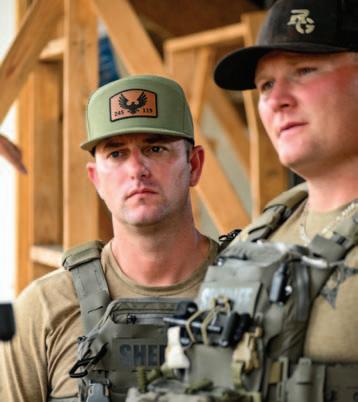
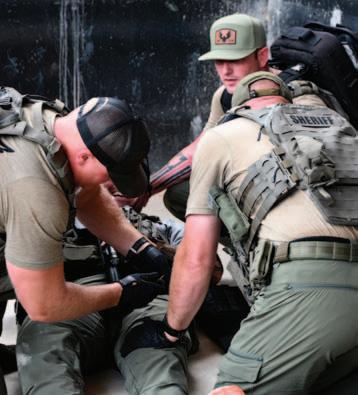
taken on specialized fitness regimens to keep up with the physical demands of tactical deployments. Some have even completed law enforcement-style obstacle courses to stay mission-ready.
And while not every paramedic will serve on the SWAT team, the benefits ripple across the agency. Lessons learned in tactical care like rapid hemorrhage control or tourniquet application are being shared throughout WCFR, making the entire department better equipped for trauma emergencies.
With the success of the SWAT medic integration, Walton County is now looking toward the future. Plans are in motion to expand the number of certified tactical medics, create a formal pipeline for WCFR personnel interested in tactical operations, and deepen the partnership with surrounding jurisdictions.
The goal is to create a sustainable, scalable model one that other counties can emulate. And based on the results so far, it’s clear the concept works.
“This isn’t just about one incident or one team,” said Sheriff Adkinson. “It’s about the overall readiness of our county. Every time we can respond faster, treat more effectively, or save a life that’s a win for everyone.”
In a world where public safety is constantly evolving, Walton County isn’t waiting for problems to come knocking. The integration of Walton County Fire Rescue paramedics into the Walton County Sheriff’s Office SWAT team is a powerful example of what happens when agencies work together, train together, and put people first.
As Division Chief Travis Cook put it, the question isn’t just who do we send into danger? The question is who’s there for them when they need help?
Now, the answer is simple.
We are.
By Jenn Samsel, Independent Journalist
The City of Keystone Heights and the Heritage Commission proudly unveiled a special tribute to celebrate the 100-year milestone of the Fire and Police Departments of Keystone Heights, coinciding with the city’s 100th anniversary.
During the event, several shadow boxes were unveiled, displaying memorabilia from the Keystone Heights Volunteer Fire and Police Departments, which have served the community throughout the decades.
Clay County Fire Rescue was present at the scene, participating in a significant moment in history while being recognized for their dedicated service.
Founded in 1925, the Keystone Heights Volunteer Fire Department has played a significant role in the community
The displays serve as a powerful reminder of the commitment and sacrifice made by those who protect and ser ve the community, ensuring the safety and well-being of the residents.
In March of this year, the Heritage Commission launched its first pop-up museum, featuring a diverse collection of memorabilia from the fire department,
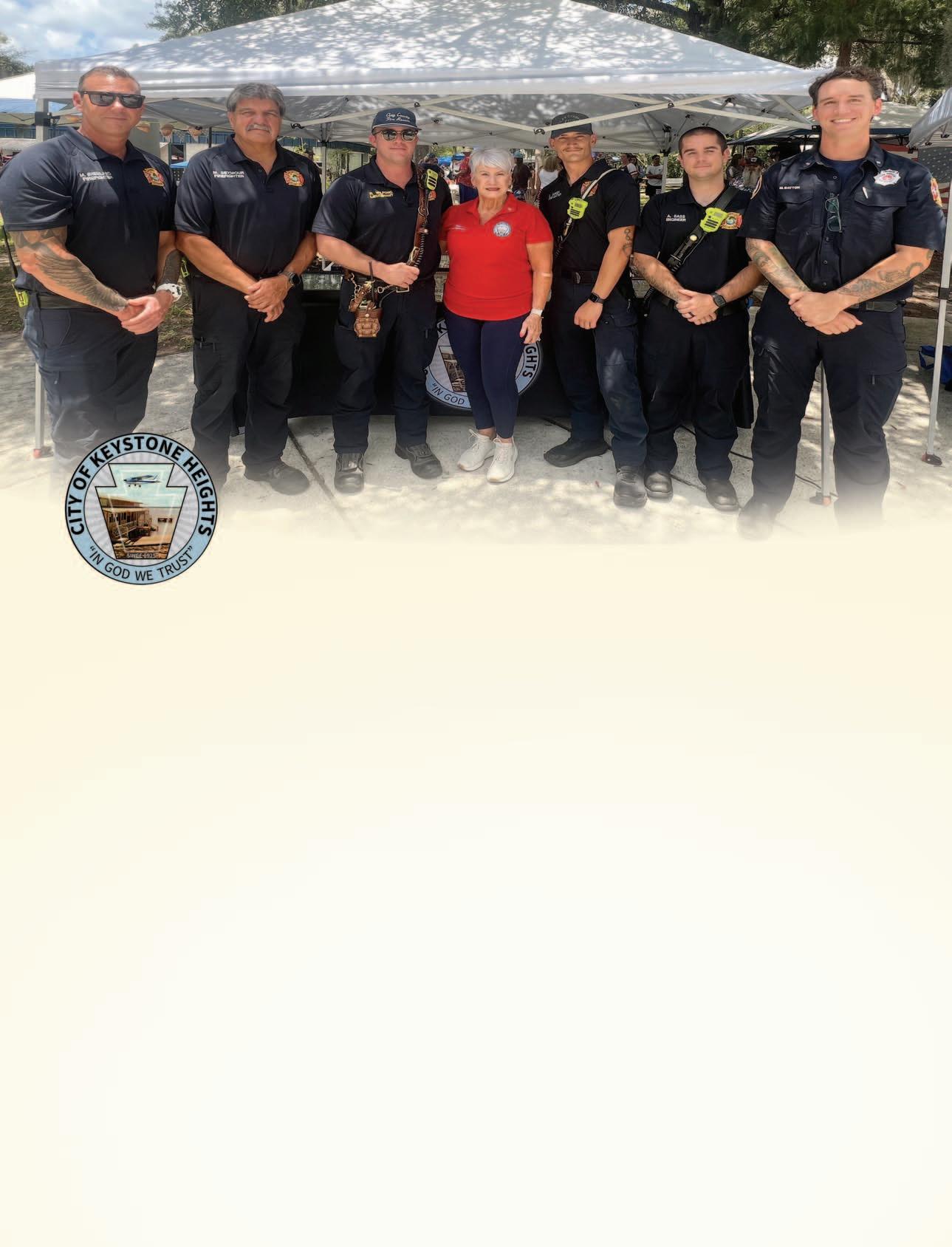
including clothing, photographs, and various artifacts. Unfortunately, many items and photos from the police department have been lost over time.
Clay County Fire Rescue acquired the Keystone Heights Volunteer Fire Department in 2017.
“We are thrilled to have all of you out here today to celebrate our very special day in honoring the Keystone Heights Volunteer Fire and Police Department. My continued thanks to our Clay County Firefighters and Deputies who are working in our community. Thank you so much! We are forever grateful
for all of your ser vice,” said Nina Rodenroth, the City of Keystone Heights Mayor Chiefs of the Keystone Heights Volunteer Fire Department: Kevin Mobley (1996present), David Seymour (1994 - 1995), Chip Ware (1993), Mike Miller (1990, 1992), George Desha (1987- 1991), Robert K. Thomas (1985- 1986), Charlie M Head Jr. (1983 - 1984), J.G. Zowarka (1975 - 1982), W.H. Redfearn Jr. (1971 - 1974), Ed Bennett (1967 - 1970), R.W. Tyre (1966), E.R. Fox (1962 - 1965), Tommy B. Millican (19591961), N.W. Hardenbergh (1955 - 1958), and C J Bastedo (1952 - 1957).
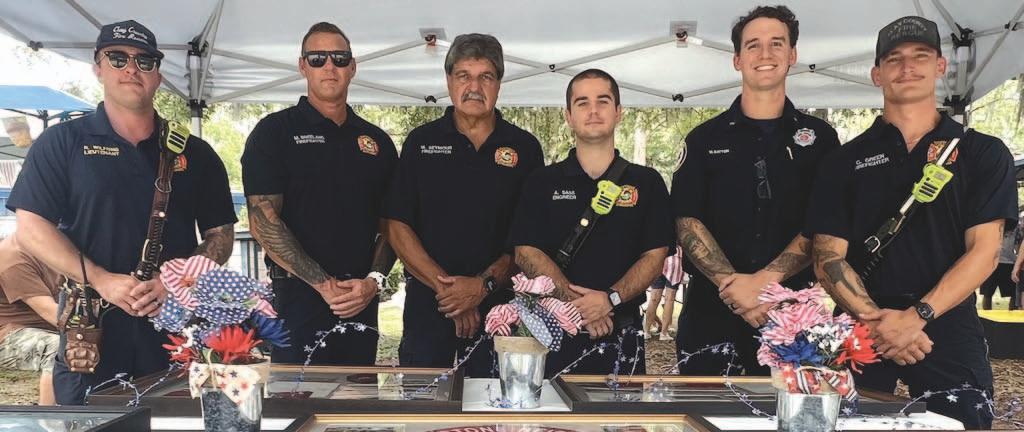
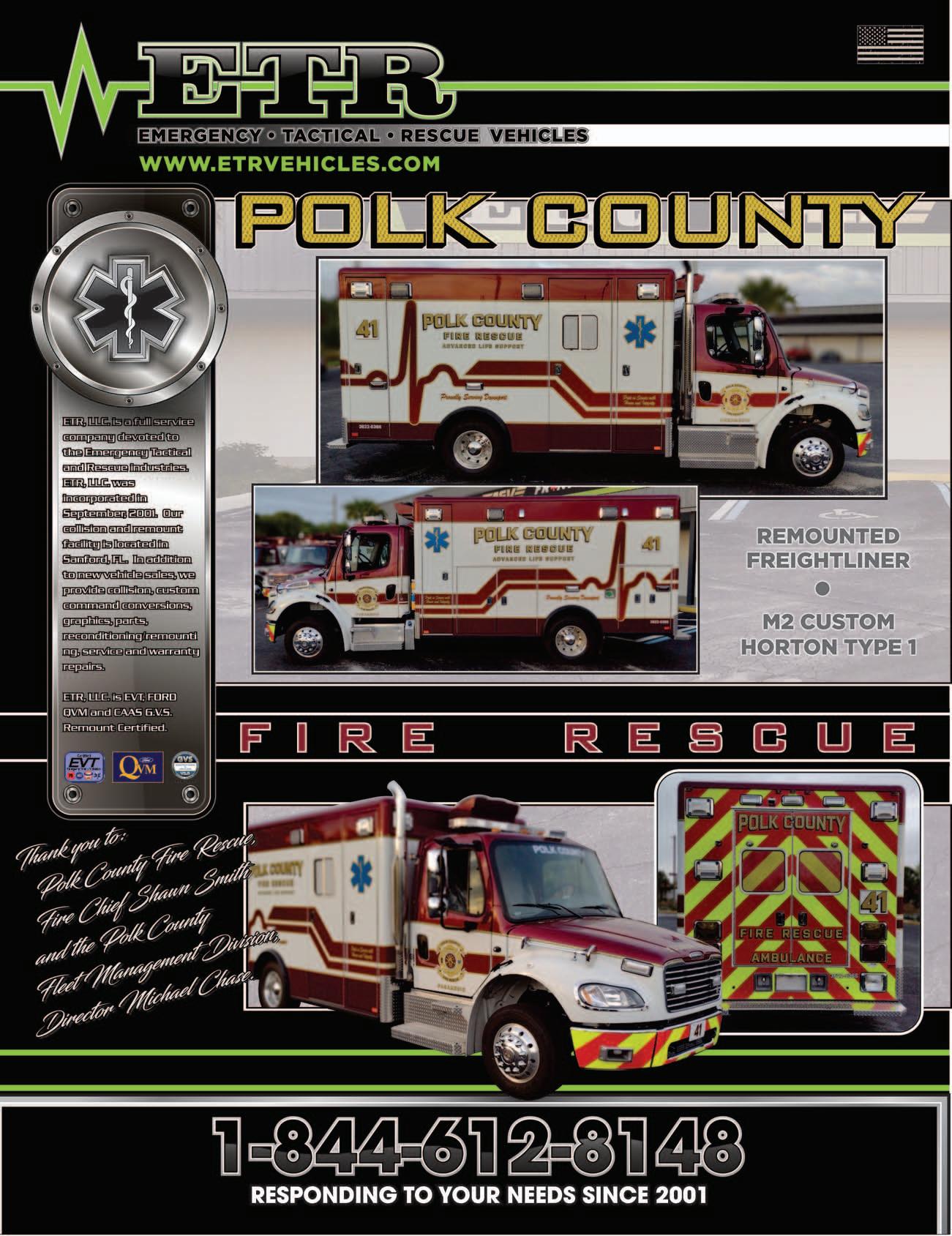
By Ashley Gipson, , Public Information Officer, Orange County Fire Rescue Department
Orange County Fire Rescue was proud to serve as the host agency for 2025 Fire Rescue International (FRI), the world’s premiere fire conference! Fire ser vice leaders and professionals from around the globe came to Orange County, Florida for a week of innovation, collaboration, and leadership development at the Orange County Convention Center. The conference kicked off August 13, 2025, with the official Welcome Ceremony, which included remarks provided by both Orange County Mayor Jerr y L. Demings and Orange County Fire Rescue Fire Chief, Anthony Rios.
Throughout the week, there were live demonstrations of Orange County Fire Rescue’s special operation technical rescues, as
well as the agency’s dive and underwater drone capabilities. The department’s innovative whole blood program, risk prevention initiatives, bike team operations, and others, were also standout highlights on the exposition floor. There were also ongoing instructional classes and training for
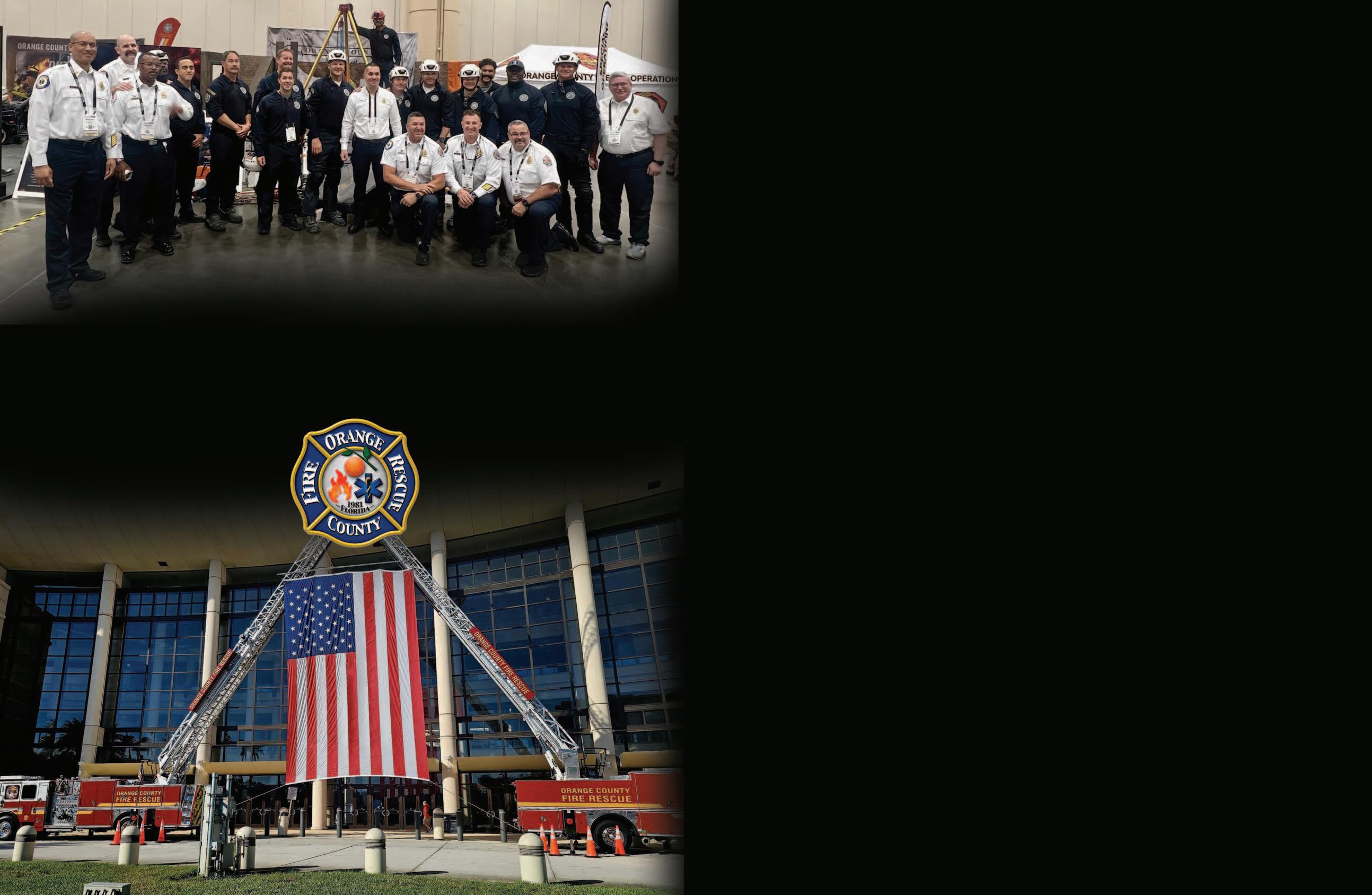
conference attendees to participate in, sharing knowledge on emerging technologies and best practices.
“It was a great honor for the Orange County Fire Rescue Department to host the 2025 Fire Rescue International Conference in our own backyard. Uniting fire ser vice professionals from near and far provided a remarkable opportunity to exchange insights, build strong partnerships, and showcase our department’s unwavering dedication and capabilities. Such conferences remind us that, despite ser ving diverse community landscapes, the fire ser vice is united in a profound mission: to ser ve with excellence as we embrace the challenges of the future and embrace them as gateways to growth.” – Fire Chief Anthony Rios.

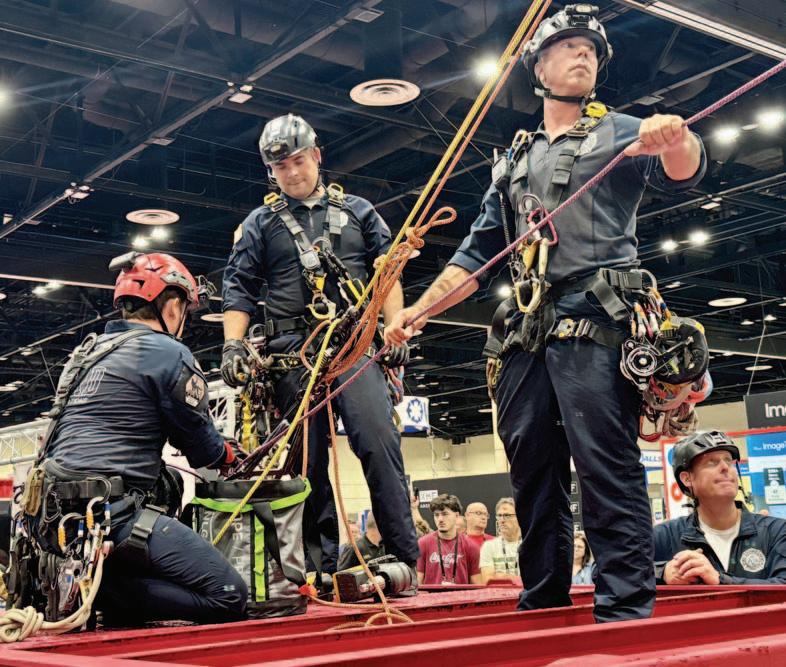
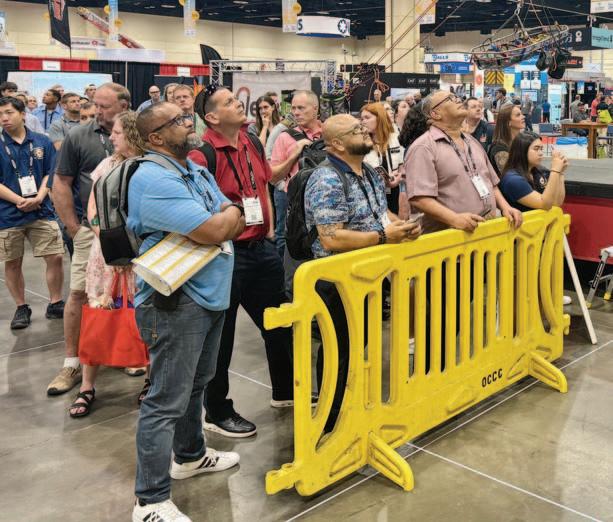
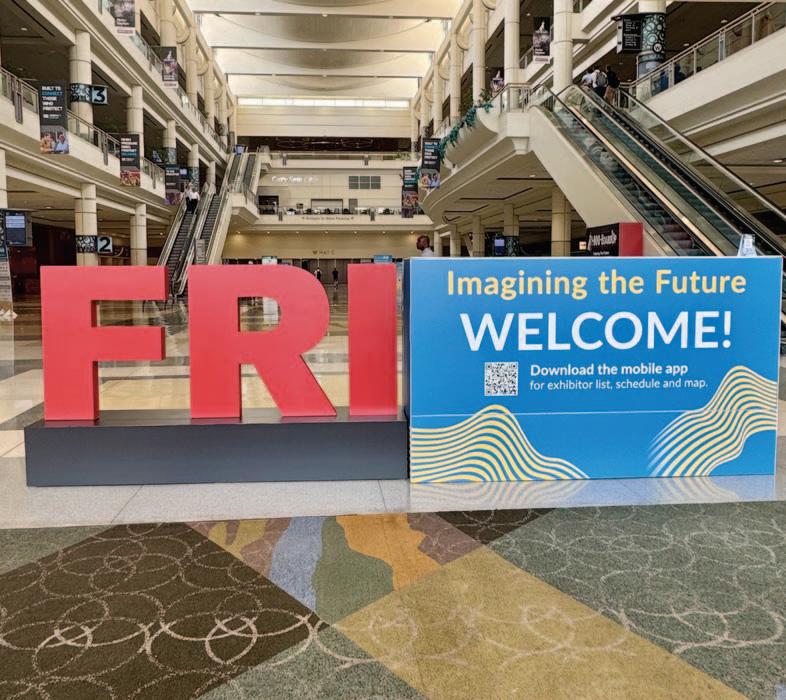
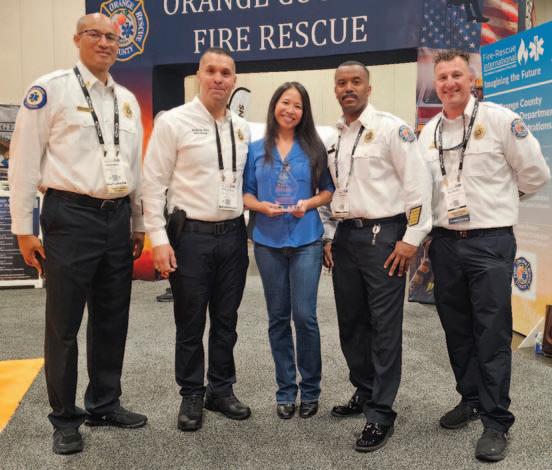
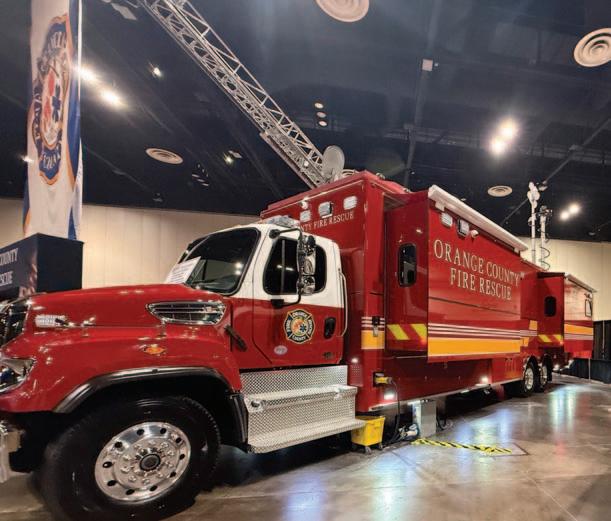
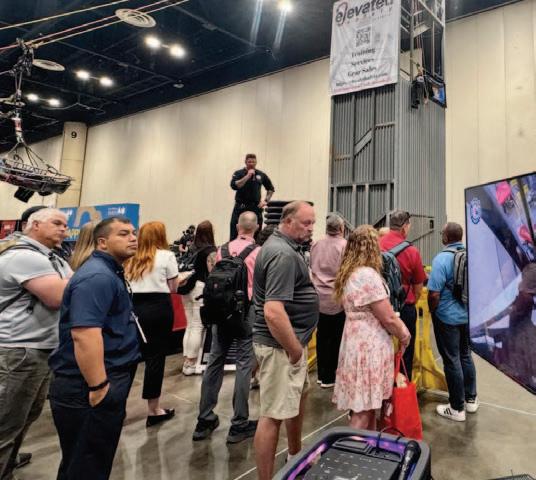
By Doreen Overstreet, Public Information Officer, Seminole County Fire Department
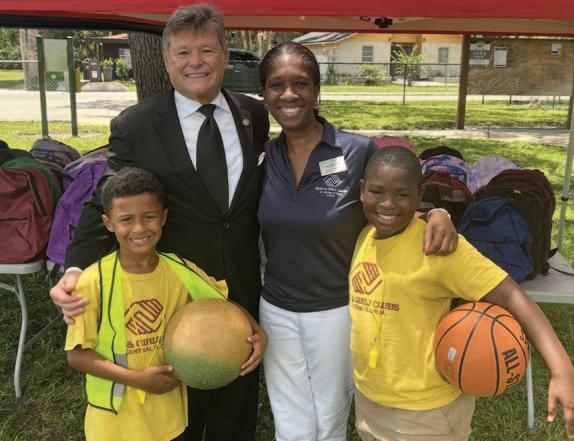
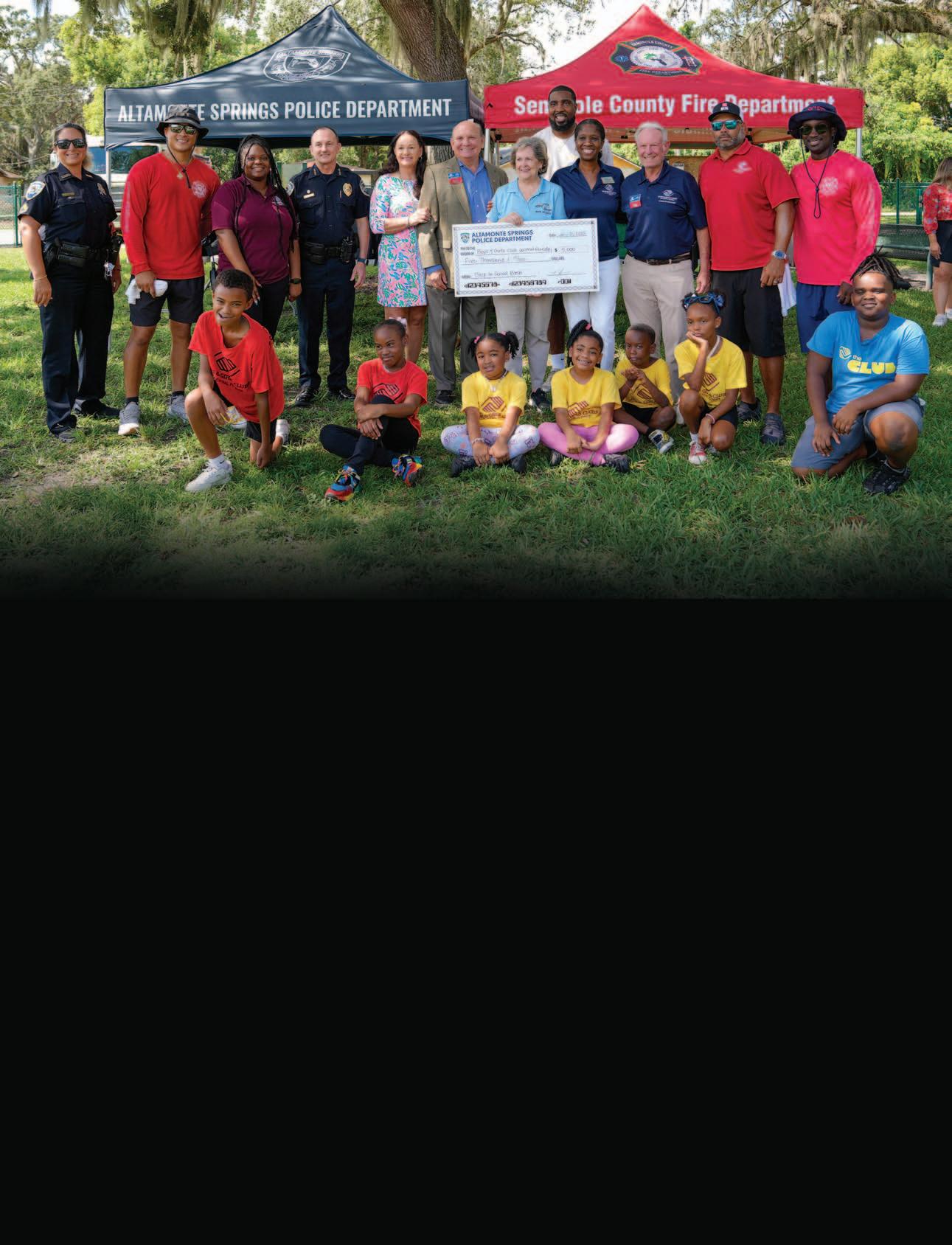
TGirls Clubs of Central Florida’s East Altamonte, West Sanford, and Oviedo branches.
The community-centered event, held in East Altamonte, featured the distribution of over 200 free backpacks—each filled with school supplies—just in time for the start of the new school year. Club members also received complimentary haircuts, a delicious lunch, and enjoyed a day filled with sports, games, and activities led by first responders.
Premier sponsor Fairwinds Credit Union generously donated all the backpacks, helping ensure that every child started the school year prepared and confident.
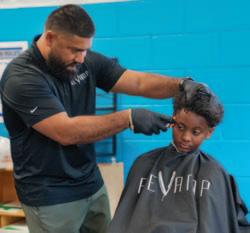
he Seminole County Fire Department and the Altamonte Springs Police Department teamed up to host the 3rd Annual Back to School Bash, bringing smiles, support, and school essentials to nearly 200 local young people from the Boys &
Additional community partners stepped up in a big way: Revamp Barbershop provided professional haircuts.
Action Church returned for the third consecutive year with food donations.

G.R.O.W. Central Florida handed out free sports balls.
Seminole County Public Schools provided free transportation to and from the event.
Jeremiah’s Ice in Casselberry provided sweet treats.
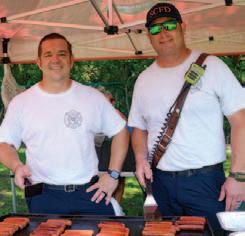
The initiative was spearheaded by Lt. Chris Torres of the Seminole County Fire Department, a former Boys & Girls Club member himself and the son of a late Altamonte Springs Police Officer.
“The Boys & Girls Club is such a positive place for kids and makes a tremendous impact on setting them up for a good future,” said Lt. Torres. “I’m incredibly grateful to my department, our law enforcement partners, and the many generous community sponsors who made this event a reality.”
The Back to School Bash continues to grow each year, strengthening ties between first responders and the community, while ensuring local children are supported and celebrated as they head into the new school year.
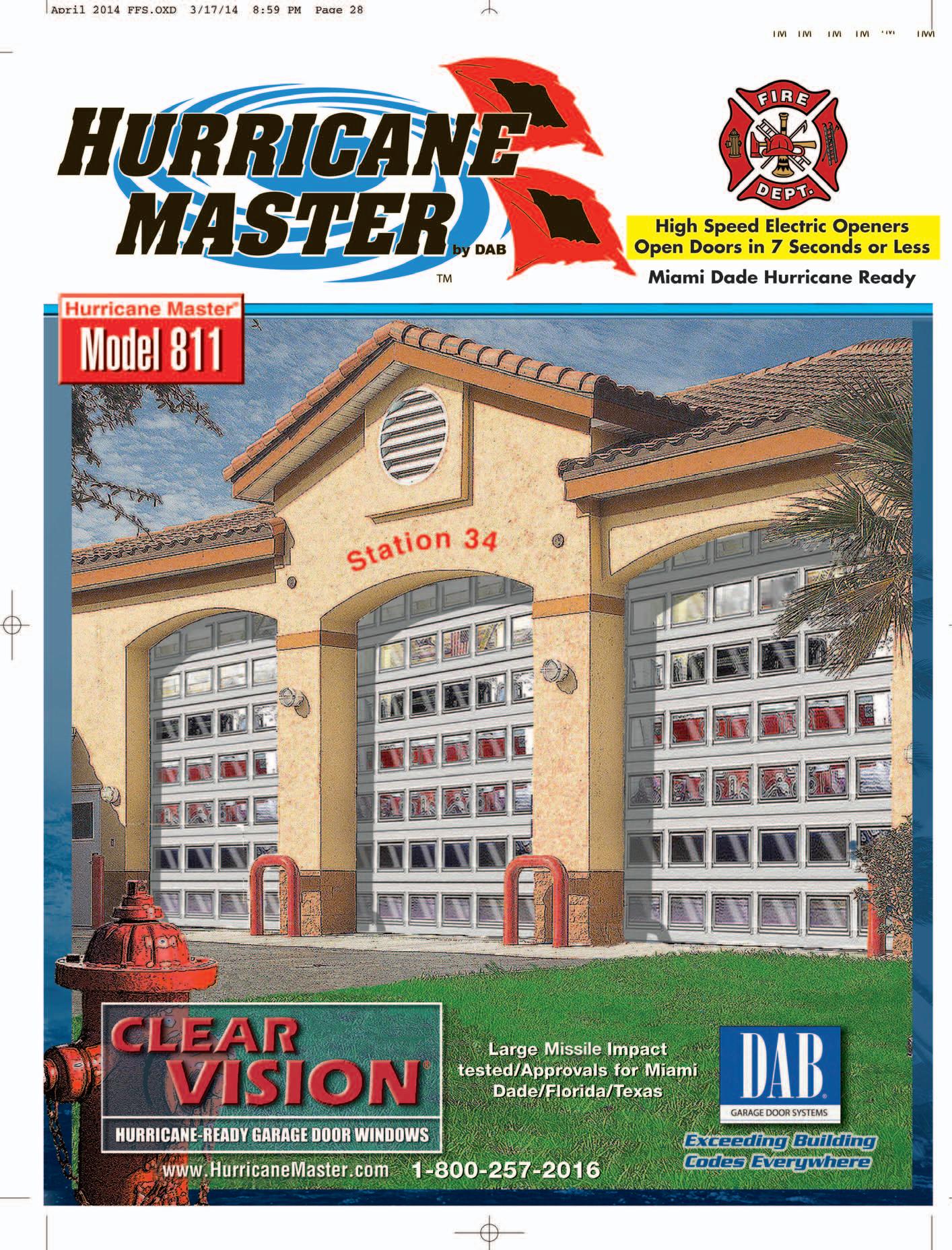

Smokey Bear celebrated another milestone, his 81st birthday, showcasing the importance of prescribed burns. The festivities held at Mike Roess Gold Head State Park in Keystone Heights, located in the southwest corner of Clay County.
At the event, it featured various fire apparatus, a variety of educational vendors, food trucks, and Smokey Bear educating families about the dangers of wildfires.

The Florida Forest Service (FFS) ignited a small, one-acre forest fire to demonstrate how quickly fires can start and spread, as well as to teach attendees about their ecological benefits and how to respond in such
By Jenn Samsel, Independent Journalist
situations. The mission of the FFS is to protect and manage the forest resources of Florida, ensuring that they will be available for future generations.
Smokey Bear made an exciting special appearance. The families took photos during story time and enjoyed cupcakes to celebrate his birthday.
“We’re conducting a controlled burn today for ecological benefit, wildfire risk reduction, and for educating the public. We can burn in a manner that suits our needs and manipulate the fire in a way that benefits the ecosystem,” said
John T. McUmber (JT), Land Manager, OrdwaySwisher Biological Station.
The FFS controls the spread of wildfires by conducting controlled prescribed burns each year.
“We’ve got boundaries of control lines around this so that fire is not going to move across the road here it’s not going to move across any of the trails and we know the weather conditions, we know where the fire wants to move to and we establish those breaks, so we know exactly our little box that it’s going to burn in,” McUmber said.
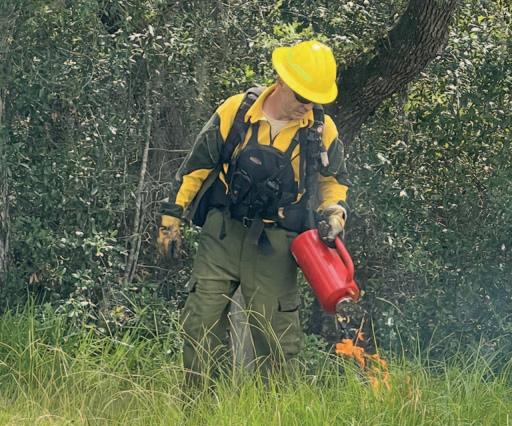

hope you got to learn a little bit about what Smokey Bear is about and the safe use of fire,” said Charles Brown, Park Manager, Mike Roess Gold Head Branch State Park.
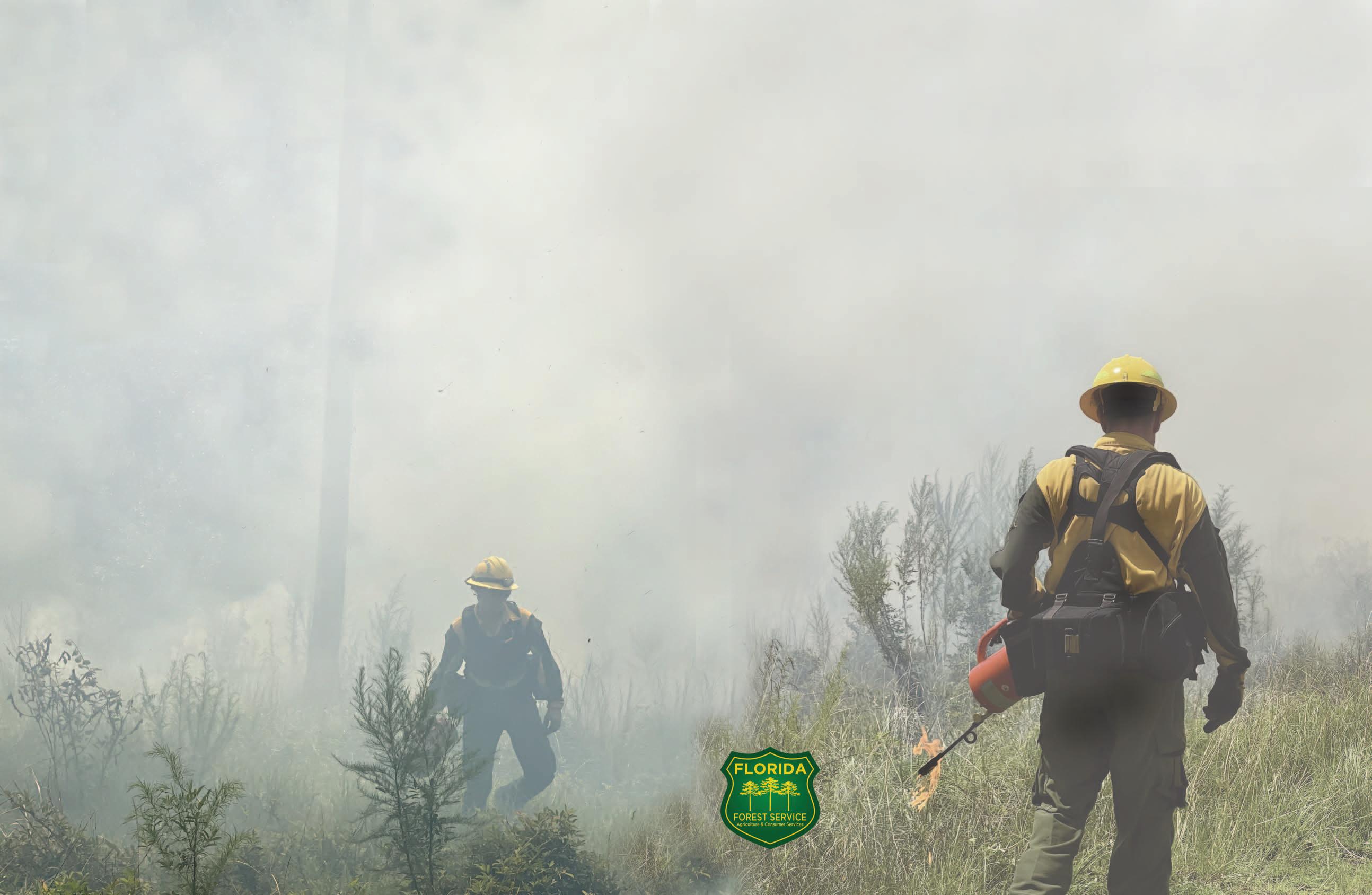
According to the FFS, lightning strikes are the number one fire starter in Florida forests.
“We appreciate everybody coming out and

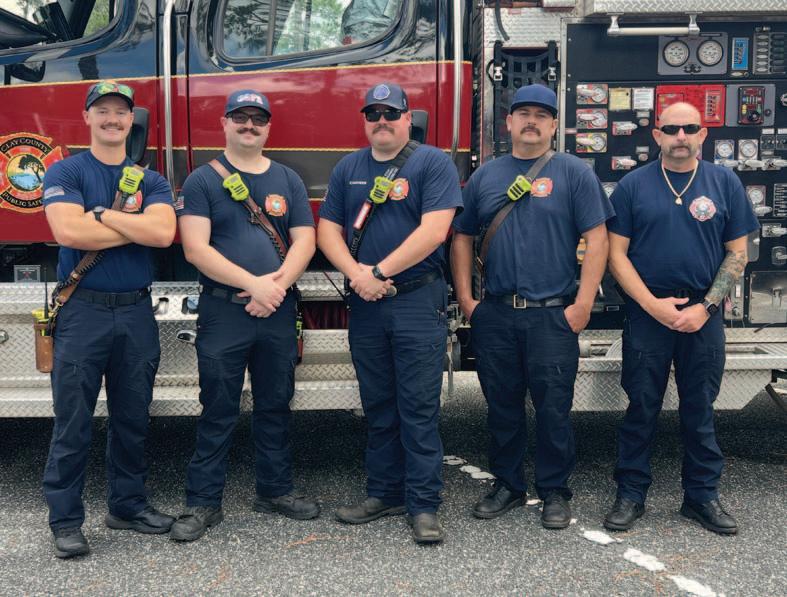
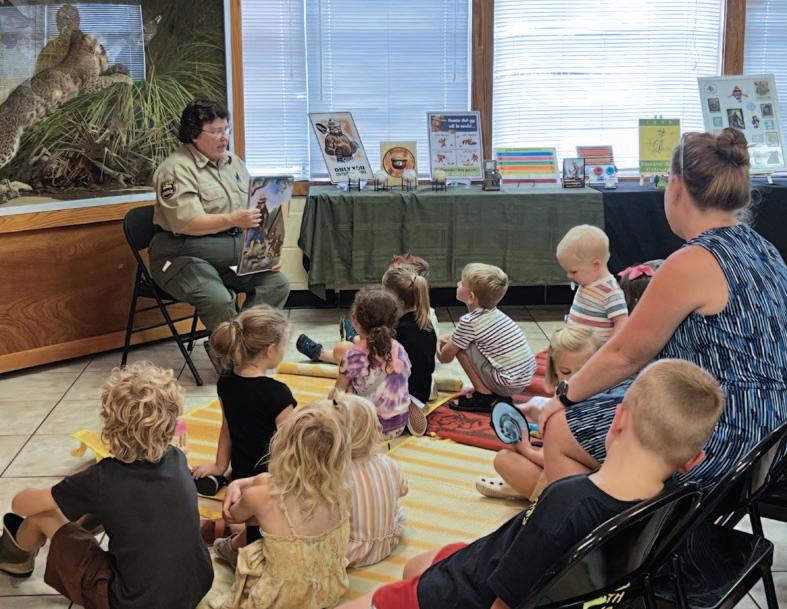
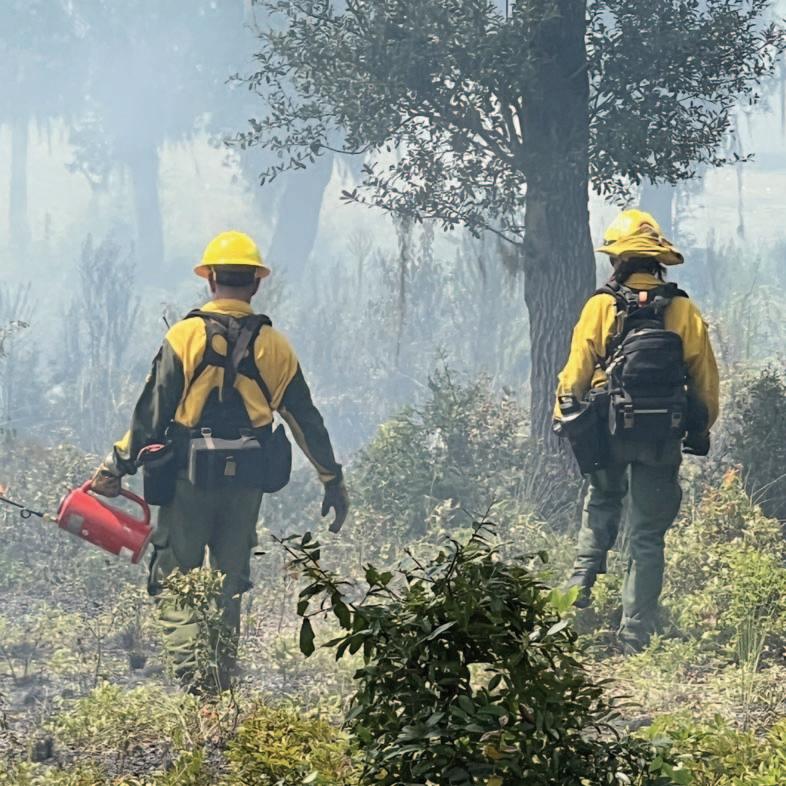
By Jason Orellana, CPST, YFIS,Fire Community Risk Reduction Specialist, Cape Coral Fire Department
The Cape Coral Fire Department recently partnered with Family Initiative, a local autism resource center making a tremendous impact across Florida, to bring tailored fire safety education to students with autism. This collaboration represents the importance

of fire departments working together with organizations that serve special and exceptional populations—ensuring fire and life safety education is accessible, meaningful, and empowering for all.
Fire safety looks different for everyone. For individuals with autism and other exceptional needs, what may seem like a routine skill—such as using a fire extinguisher—can feel overwhelming or even frightening. Recognizing this, the fire department leveraged the cuttingedge technology of digital fire extinguishers from FIAR. These state-of-the-art tools simulate real fires in a safe, controlled environment, allowing students to practice without the risks or sensory overload that a live flame could cause.
This hands-on experience not only gave
students confidence but also made the process approachable and engaging. For many, it was the first time they felt comfortable taking hold of a fire extinguisher and learning how to use it effectively.
While the equipment was important, the true impact came from the educational component.
Community Risk Reduction Specialist Jason Orellana and Fire Safety Educator Andrea Lowther, worked alongside Family Initiative staff to adapt fire safety lessons in ways that resonated with the students’ needs. By introducing safety concepts through visual aids, demonstrations, and patient, guided practice, the students were able to learn at their own pace and in a way that made sense to them.
This type of specialized education goes beyond simply “teaching fire safety.” It ensures that when emergencies occur, individuals from all walks of life are better prepared to protect themselves and their loved ones.
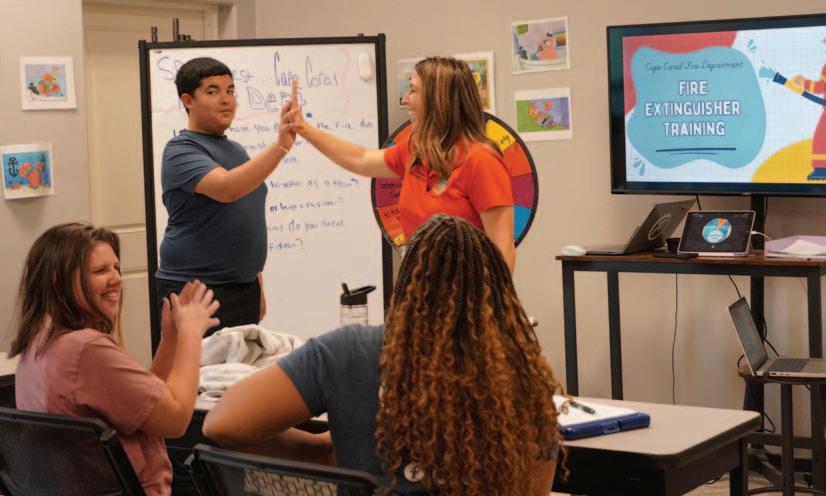
Family Initiative is a trusted resource for families across Florida, and by partnering with them, the Cape Coral Fire Department was able to connect directly with the community they serve. These kinds of partnerships are essential for fire departments everywhere. They help bridge the gap between first responders and populations that may otherwise be overlooked or underserved.
When fire departments embrace opportunities to collaborate with organizations

that specialize in working with exceptional populations, they create not just safer communities—but more inclusive ones. Safety should never be one-size-fits-all.
This collaboration is just the beginning. As the Cape Coral Fire Department continues to build relationships with community partners like Family Initiative, the goal remains clear: to empower every member of the community, regardless of ability, with the knowledge and confidence to stay safe.
By investing in programs that reach exceptional populations, fire departments honor their commitment to serve everyone. And in doing so, they reinforce the message that fire safety education is not just a responsibility—it’s a shared opportunity to protect, uplift, and inspire.
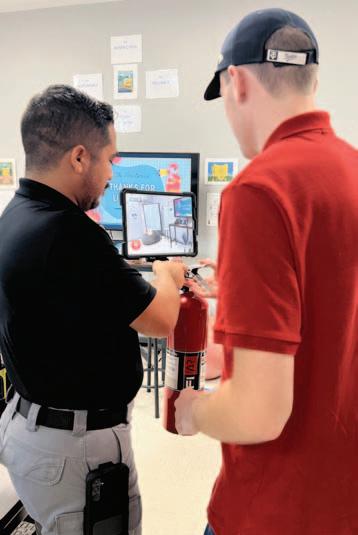

By Lieutenant Patrick Juliano, Fire Public Information Officer, Palm Coast Fire Department
The Palm Coast Fire Department proudly announces the promotion of Driver Engineer Brandon Davis to the rank of Lieutenant, and Firefighters Gunner Pemberton and Caleb Dann to the rank of Driver Engineer. Additionally, Pemberton and Dann have both successfully completed the Paramedic program at Daytona State College and are now State Certified Paramedics.
These promotions reflect the department’s commitment to cultivating excellence and advancing leadership within its ranks.
Lieutenant Brandon Davis will serve in a firstline supervisory role, responsible for leading emergency response operations including fire suppression, EMS, and motor vehicle crashes. Lieutenants provide critical leadership to fire companies not only at incident scenes but also as firefighters prepare and train to be at their best. Davis originally joined the department as a Volunteer Firefighter in 2006. After a brief hiatus, he rejoined the intern program in 2017 and became a career firefighter in 2018. He holds Firefighter, EMT, and Paramedic
certifications from First Coast Technical College and was promoted to Driver Engineer in 2022. Outside the firehouse, Davis is also known for his musical talent as an accomplished drummer.
Driver Engineers perform a highly technical role with Palm Coast Fire Department. Their responsibilities include the safe conveyance of fire apparatus to and from the emergency scenes, operating the most complex mechanical tools of the department such as fire pumps and hydraulic ladders, and demonstrating leadership specifically in keeping the fire company’s equipment at a constant state of readiness.
Gunner Pemberton, a proud graduate of Matanzas High School’s Class of 2021, began his fire service career at Daytona State College where he earned his Firefighter and EMT certifications in 2023. Originally from Long Island, New York, Gunner found his home in Palm Coast and transitioned from the kitchen—as a cook in Flagler Beach—to the fireground. Now, as a Driver Engineer and
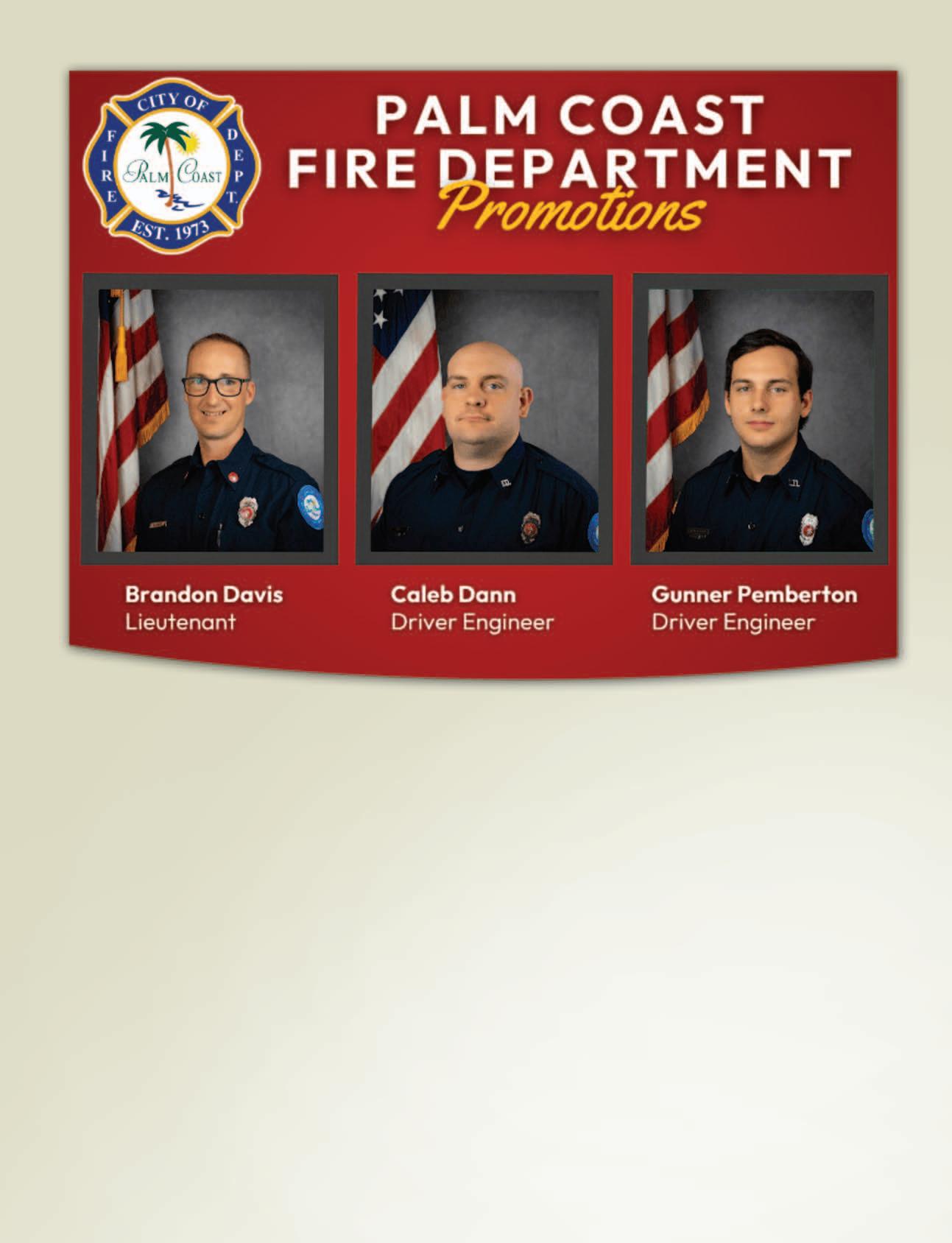
State Certified Paramedic, Pemberton continues to serve with skill and dedication.
Caleb Dann, originally from Philadelphia, Pennsylvania, graduated from Atlantic High School, where he excelled as a student-athlete on the football field. He completed his Firefighter and EMT certifications at Daytona State College and recently achieved his State Paramedic Certification. Now promoted to Driver Engineer, Dann brings strong leadership and a passion for emergency medicine to every response.
“We are so proud of Brandon, Gunner, and Caleb for their hard work, dedication, and growth,” said Fire Chief Kyle Berryhill. “Their professional achievements reflect their dedication to excellence and to the growth of the Palm Coat Fire Department. We are eager to see how their leadership will continue shaping our culture and advancing our capabilities.”
The department proudly congratulates these members on their achievements and extends its gratitude for their dedication.

By Nathaniel Gale, Public Safety Information Officer, Polk County Fire Rescue
Polk County Fire Rescue (PCFR) members assisted in welcoming a new life on Tuesday, Aug. 19 in Highland City. Firefighter/Paramedic George Gibson along with Firefighter/EMT Daniel Banks and Firefighter/EMT Madison Bennett worked quickly as they delivered a newborn within minutes of arriving on scene of the Southgrove Place home.
The crew arrived at the home at 9:31 a.m. where they noticed that delivery was imminent, so they got to work and about four minutes later completed the delivery. Following the delivery, the members transported the mother and newborn to a local hospital.
“The ability to aid in the birth of a child is one of the most special moments for any Paramedic or EMT,” said Fire Chief Shawn Smith. “I am proud of the crews of Rescue 28 and Engine 28 for their excellent work in such an important medical situation. Their actions helped make sure both patients arrived to the hospital in good health.”
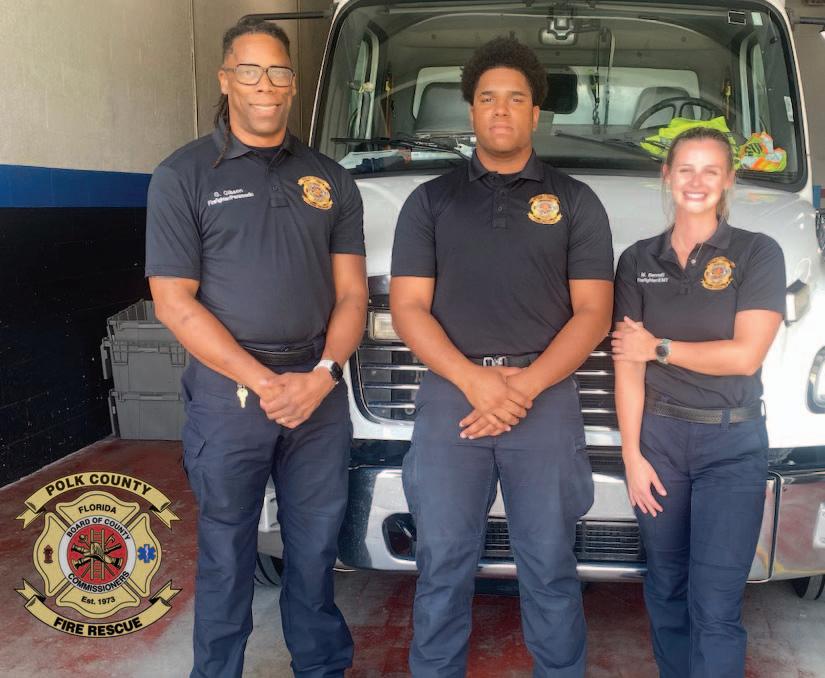
Firefighter/Paramedic George Gibson, Firefighter/EMT Daniel Banks and Firefighter/EMT Madison Bennett
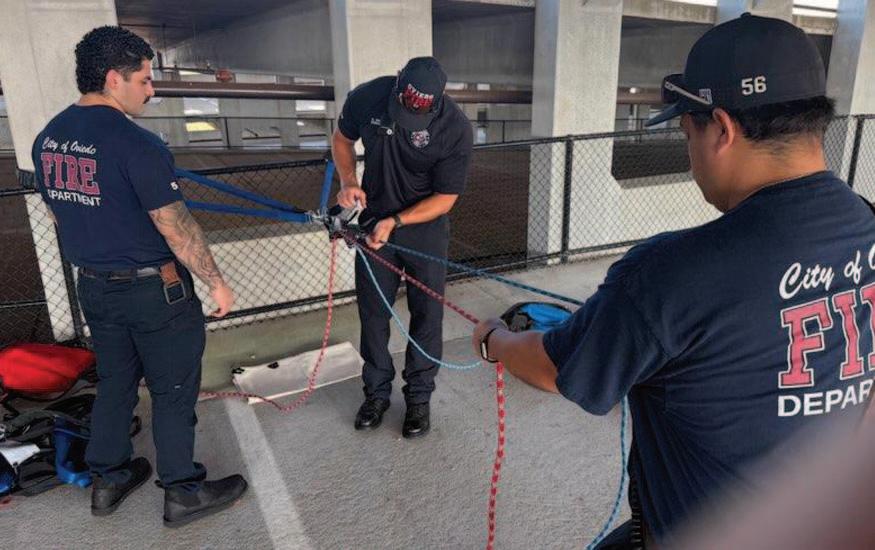
By Lisa McDonald, Communications Manager, City of Oviedo
The Oviedo Fire Department’s C-Shift crew recently tested their skills during a specialized ropes training session atop a ten-story parking garage.
This high-angle training included rappelling exercises and simulated “victim pick-offs,” designed to prepare firefighters for rapid-response rescues in challenging environments. By practicing on a real
structure rather than in a controlled classroom setting, firefighters gain valuable experience that makes transitioning their skills to actual emergencies more seamless and effective.
The training was made possible through a strong partnership with community stakeholders, whose cooperation allows the department to access unique facilities for

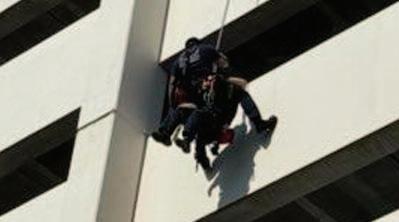
realistic drills. These collaborations are a vital part of maintaining readiness for any situation—from rescuing someone trapped on a high ledge to navigating complex urban rescues.

By Lisa Smith, Operations
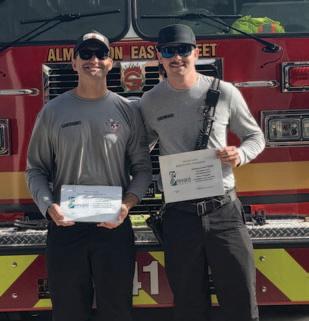
On Friday July 19, 2025, Lt. Michael Benton, FM Shane Kennedy and FF/EMT Alexander Supik (missing from the picture) from Brevard County Fire Rescue’s Station 41 B-Shift were recognized by AC Luisi and DC Gardiner for performing a recent act of kindness. While returning from a call on July 13, 2025, they noticed a resident’s flagpole had fallen due to a severe storm that had just rolled through the Merritt Island area. They pulled over and attempted to stand the flagpole back in place. The homeowner was out of town and caught their action on his Ring camera and posted his gratitude on social media. The owner stated “To the Brevard County Fire Rescue, thank you for the respect of the American flag and the care of my property this evening. I am away from home and there was a pretty nasty storm that broke my flagpole. Thank you, Station 41, for your professionalism and efforts. Sincerely Lt. Don Schrier Cape Canaveral Space Force Station FD.” Due to their professionalism, they were nominated and receive the Brevard County Extra Mile award for their effort and superior per formance for going above and beyond while on the job.
By Lieutenant Patrick Juliano, Fire Public Information Officer
The Palm Coast Fire Department proudly announces the appointment of David Faust as Battalion Chief of Training.
In his new role, Chief Faust will lead the department’s efforts to recruit, train, and develop both current and future members of the organization. This position is essential to ensuring operational readiness, professional growth, and the continued delivery of high-quality service to the Palm Coast community. His responsibilities include overseeing department-wide training and education, mentoring personnel for future leadership roles, and establishing and maintaining professional standards across the organization.

Chief Faust began his service with the Palm Coast Fire Department in 2006 as a Volunteer Firefighter, becoming a career firefighter in 2008. He earned his Firefighter, EMT, and Paramedic certifications from First Coast Technical College, followed by a Bachelor’s Degree from Flagler College and a Master’s Degree from Barry University. His career progression includes promotions to Driver Engineer in 2016, Lieutenant in 2017, and Battalion Chief in 2022. In December 2023, Chief Faust achieved the prestigious Executive Fire Officer designation from the National Fire Academy, one of the highest recognitions for fire service leaders nationwide.
“Chief Faust brings a wealth of experience, dedication, and leadership to this role,” said Palm Coast Fire Chief Kyle Berryhill. “His commitment to training and professional development will ensure our firefighters have the tools and knowledge to meet the needs of our growing community both today and into the future.”
By Lisa McDonald, Communications Manager
On July 31, the Oviedo Fire Department had the privilege of celebrating a remarkable milestone for a local resident who turned 101 years old. Ms. Barbara was celebrating her 101st birthday and the family reached out to help make it even more special.
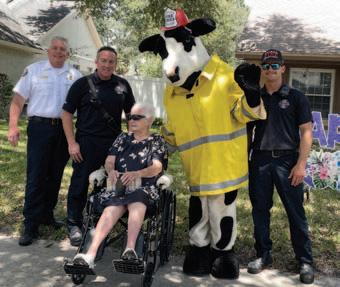
The centenarian was all smiles when firefighters arrived to surprise her, bringing not only a fire engine but also a special guest, the beloved Chick-fil-A Cow.
Fire Chief Michael Woodward stopped by to personally wish Ms. Barbara a happy birthday before the fire engine even arrived. Ms. Barbara shared stories about growing up and her family with the Chief.
The visit was filled with laughter, warm conversation, and a shared sense of community pride as the Fire Department honored her
For the firefighters, the joy was mutual. Seeing Ms. Barbara’s delighted reaction served as a reminder of the department’s commitment to fostering connections beyond emergency calls, proving that sometimes the best part of the job is making someone’s day a little brighter
By Davis Wood, Public Information and Education Officer


At 10 a.m. on Friday, July 18, Escambia County Fire Rescue units responded to a motor vehicle crash with heavy extrication involving multiple vehicles. Upon arrival, two vehicles were found upside down with one occupant trapped in each vehicle. On-scene units stabilized the vehicles and extricated the occupants from the vehicles. Extrications were per formed using hydraulic and batterypowered tools. Once the patients were freed, they were transferred to the care of Escambia County EMS, which rapidly transported the patients to area hospitals. The situation was brought under control by 10:36 a.m. Assistance was provided by Escambia County EMS, Florida Highway Patrol and the Escambia County Sheriff’s Office.




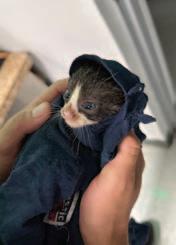
By Davis Wood, Public Information and Education Officer – Public Safety
At 9:04 a.m. on Monday, Aug. 4, during a heavy rainstorm, Escambia County Fire Rescue’s Engine 1 and Logistics 1 were dispatched to a small animal rescue at the 300 block of Loveland Circle in Pensacola.
Soon after arrival, a small kitten was found stuck in the engine compartment of a vehicle. Firefighters removed several skid plates from beneath the vehicle to make access to the kitten. The kitten was removed unharmed. The kitten was placed into the care of a family member of an ECFR firefighter.
Chief
By BrittanyN.Kershaw, DirectorOfCommunications&Marketing
What began as a young man’s desire to help others in 2001 with the Eastchester Volunteer Ambulance Corps in New York has grown into a decades-long career of dedication, leadership, and service to the community Today, the Palm Coast Fire Department proudly announces the promotion of Patrick Juliano to battalion chief.

Juliano’s public safety trajectory launched when he earned his New York State EMT certification in 2002. In 2006, he joined the Palm Coast Fire Department as a volunteer firefighter and was hired as a career firefighter two years later. He rose through the ranks to driver engineer in 2018 and lieutenant by 2021. He holds firefighter certifications (2007) and paramedic certification (2009) from Daytona State College, a Bachelor of Science in Public Administration from Flagler College, and a Master of Public Administration from Barry University.
As a certified Advanced Public Information Officer, Juliano has represented the fire department on television, radio, and in print. He manages the department’s social media channels, responds to media inquiries, and ensures that the public remains informed during both emergencies and community events.
Juliano also serves as the department’s grants writer—securing vital resources for the fire department and assisting other City departments in obtaining funding. He leads as Commander of the Palm Coast Fire Department Honor Guard and has represented his peers as both President and current Vice President of the Palm Coast Professional Firefighters Local 4807.
“Patrick Juliano has dedicated his career to serving our residents with professionalism, compassion, and a commitment to excellence,” said Palm Coast Fire Chief Kyle Berryhill. “His promotion to Battalion Chief is a wellearned milestone, and we are incredibly proud to have him as a leader in our department.”
By Lis Smith, Operations
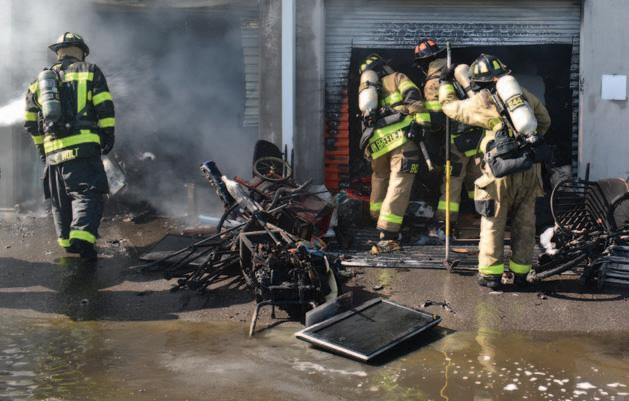
Brevard County Fire Rescue (BCFR) crews from Stations 40, 41, 42, 43, 44, 46, 48 and Cocoa, Cocoa Beach, Cape Canaveral, and Merritt Island Volunteer Fire Departments responded to a structure fire at a storage facility on Fortenberry Rd. in Merritt Island. Upon arrival, crews found heavy smoke and multiple storage units on fire. Crews were able to quickly make access and knock the fire down. There were no injuries related to the fire, but many units had significant smoke damage. After the initial response, Brevard County Fire Marshal, Assistant Fire Marshal and several Fire Inspector’s arrived on scene. The cause of the fire is still under investigation.
By Davis Wood, Public Information and Education Officer – Public Safety
Escambia County Fire Rescue and EMS responded to a house fire in the 2800 block of East Kingsfield Road Tuesday, Aug. 12, which tragically resulted in the death of one individual and three pets.
Escambia County Emergency Communications received multiple calls at approximately 6:16 p.m. Tuesday about a residential structure fire with entrapment on East Kingsfield Road. ECFR and EMS were quickly dispatched, with ECFR arriving on scene to find the single-story house engulfed in heavy flames and thick smoke. Additional ECFR and EMS units were called due to the significant nature of the fire and multiple patients.

Firefighters entered the burning house for search and rescue, where they discovered one adult victim who was quickly removed from the home. Despite advanced resuscitation efforts, including on-scene care by ECFR, EMS, and the EMS physician, the patient was pronounced deceased at the scene.
Two additional occupants were located outside of the home and received medical care from EMS. One patient was airlifted and the other was transported by ambulance to area hospitals.
During the primary search of the home, one dog and two cats were found deceased. Additionally, one firefighter experienced minor injuries during the response.
Firefighters brought the situation under control by 6:40 p.m. Due to the significant fire damage, the house is a total loss. The Florida Bureau of Fire, Arson and Explosives is investigating the cause of the fire.

By Ashley Gipson, MA, APIO, Public Information Officer, Orange County Fire Rescue
Florida’s Urban Search and Rescue (USAR) Task Force, comprised of 35 personnel from Orange County Fire Rescue, Orlando Fire Department, Seminole County Fire Department, Osceola County Fire Rescue and Melbourne Fire Department deployed to Texas on July 8, 2025, to assist with the search and rescue efforts following the devastating
floods. The Swift Water element of the team deployed a day earlier, on July 7. The teams returned two weeks later on July 22 and July 23 after completing assignments in Travis County, bringing critical expertise and equipment to locate and rescue those impacted. The deployment included operations in the air, on the ground, and in

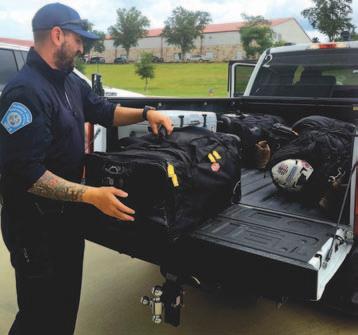
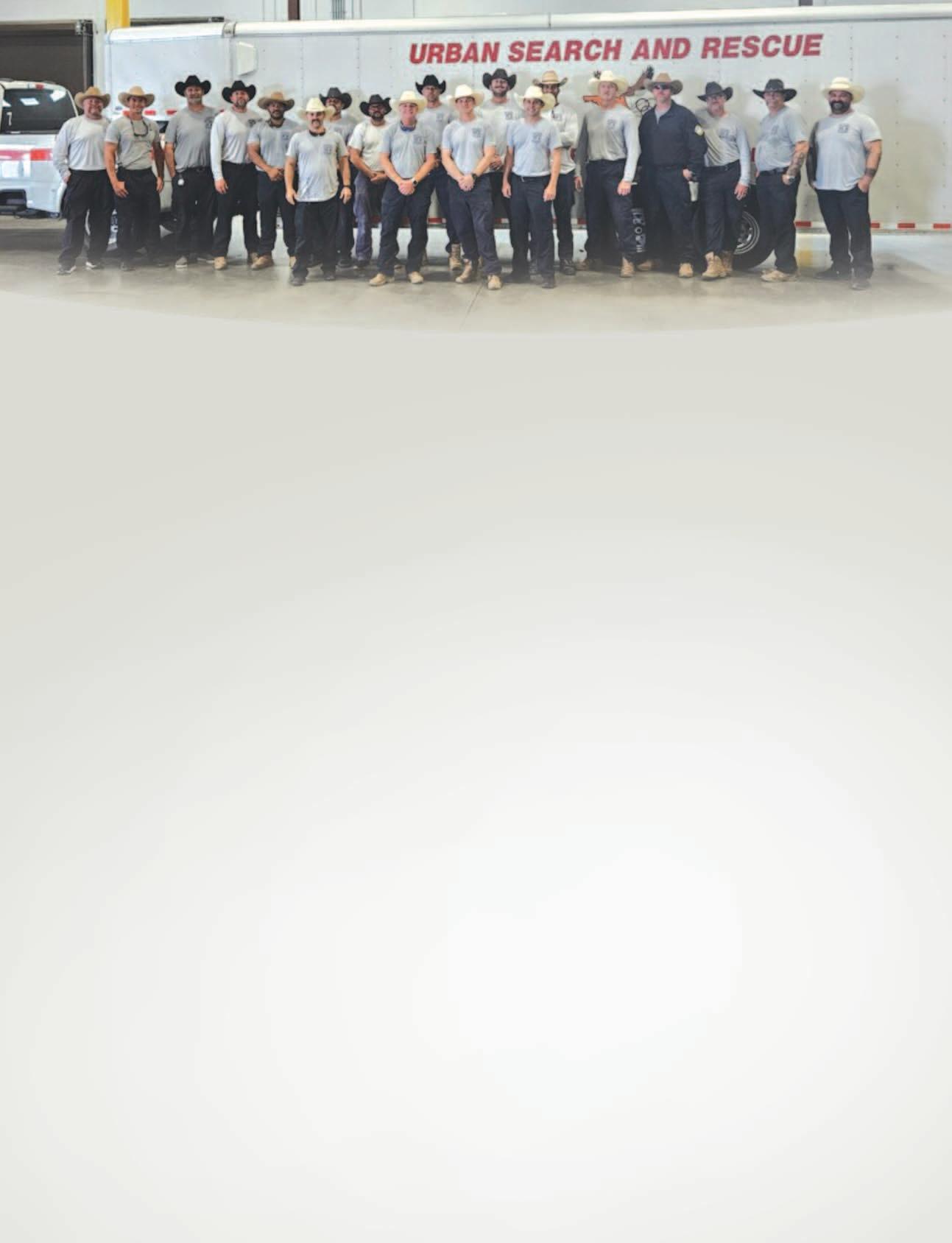
the water- covering more than 25 miles of riverbanks. We extend our condolences to the residents of Texas have experienced such immense loss.
